Tagged with 'Designers'


-
The Speed and Style of the Ocean Liners
The Speed and Style of the Ocean Liners
This spring, the V&A Museum in London celebrates the magnificence of the legendary Ocean Liners. Symbols of the technological advancement and celebration of luxury that defined the early 20th century, the Ocean Liners also gained notoriety for tales of human tragedy.
The exhibition takes its audience on a journey from the Belle Epoque to Art Deco, illustrating the way in which these monumental feats of engineering facilitated waves of entrepreneurship and the global movement of wealth during these periods.
The era was defined by its innovation, glamour and audacity, providing a canvas for highly crafted, extravagant interiors and for the ostentatious glamour of their upper class travelers.
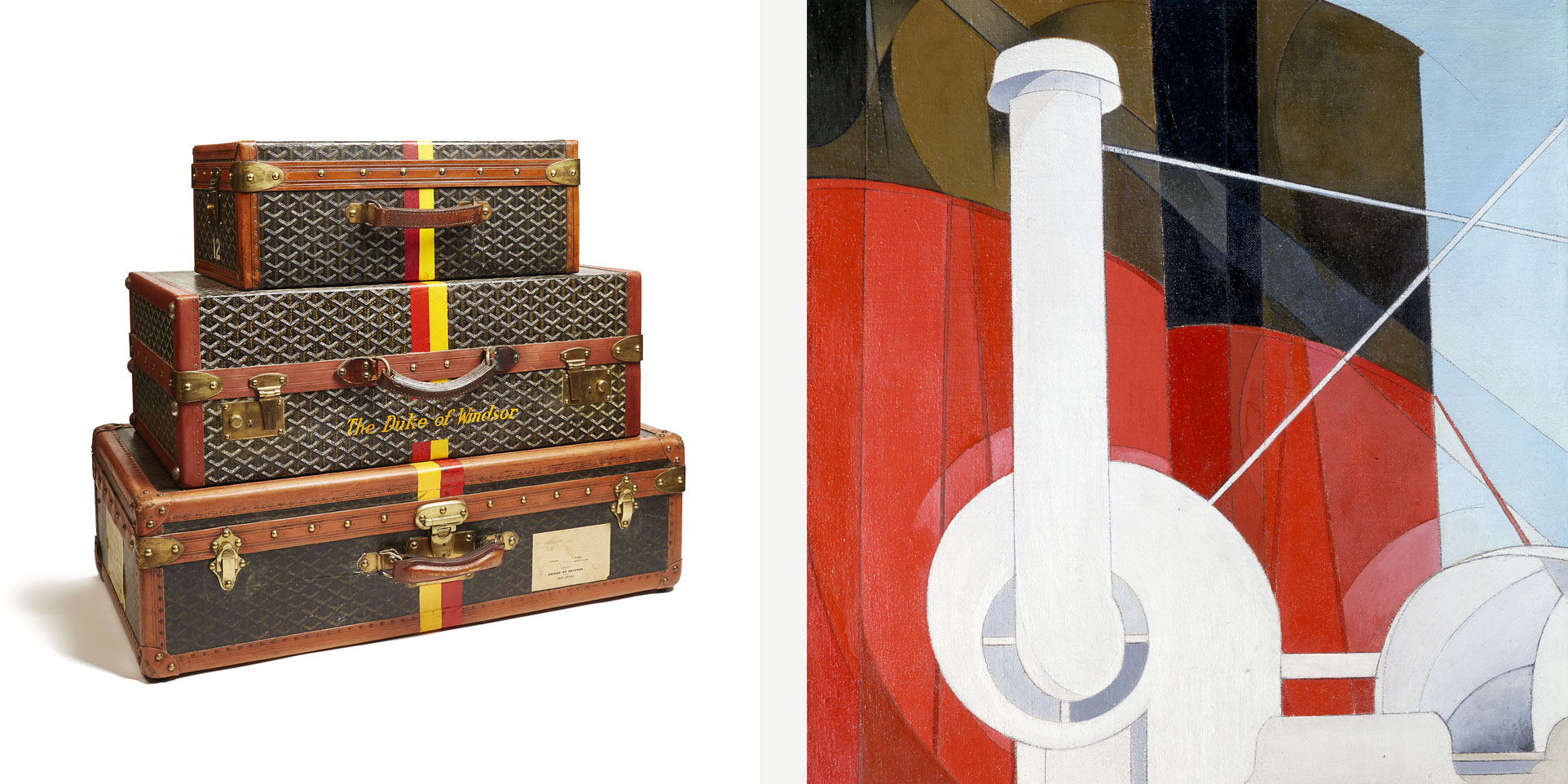
Image 1: Duke and Duchess of Windsor's luggage, Goyard, about 1950
Image 2: Paquebot, Paris, Charles Demuth, United States 1921-22
The exhibition showcases objects from the emotive deckchairs of the downed Titanic, to the iconic graphics that the industry supported, the legendary luggage of Goyard and glittering flapper dresses of the 1920s.
The Cartier Tiara
One of the most famous jewels displayed in this current exhibition is the Allen Tiara, commissioned from the legendary house of Cartier in 1909 by the Canadian banker and shipping magnate Sir Hugh Allan, as a gift for his wife Marguerite.
As with the Ocean Liners themselves, Cartier’s graphic combination of platinum, white diamonds and pearls came to symbolise the jewellery fashions of this generation.
The Allen Tiara was designed as an open work band in the Greek key style, millegrain-set with round faceted diamonds, inside an outer border of natural pearls, and framing an old mine-cut diamond at the centre.
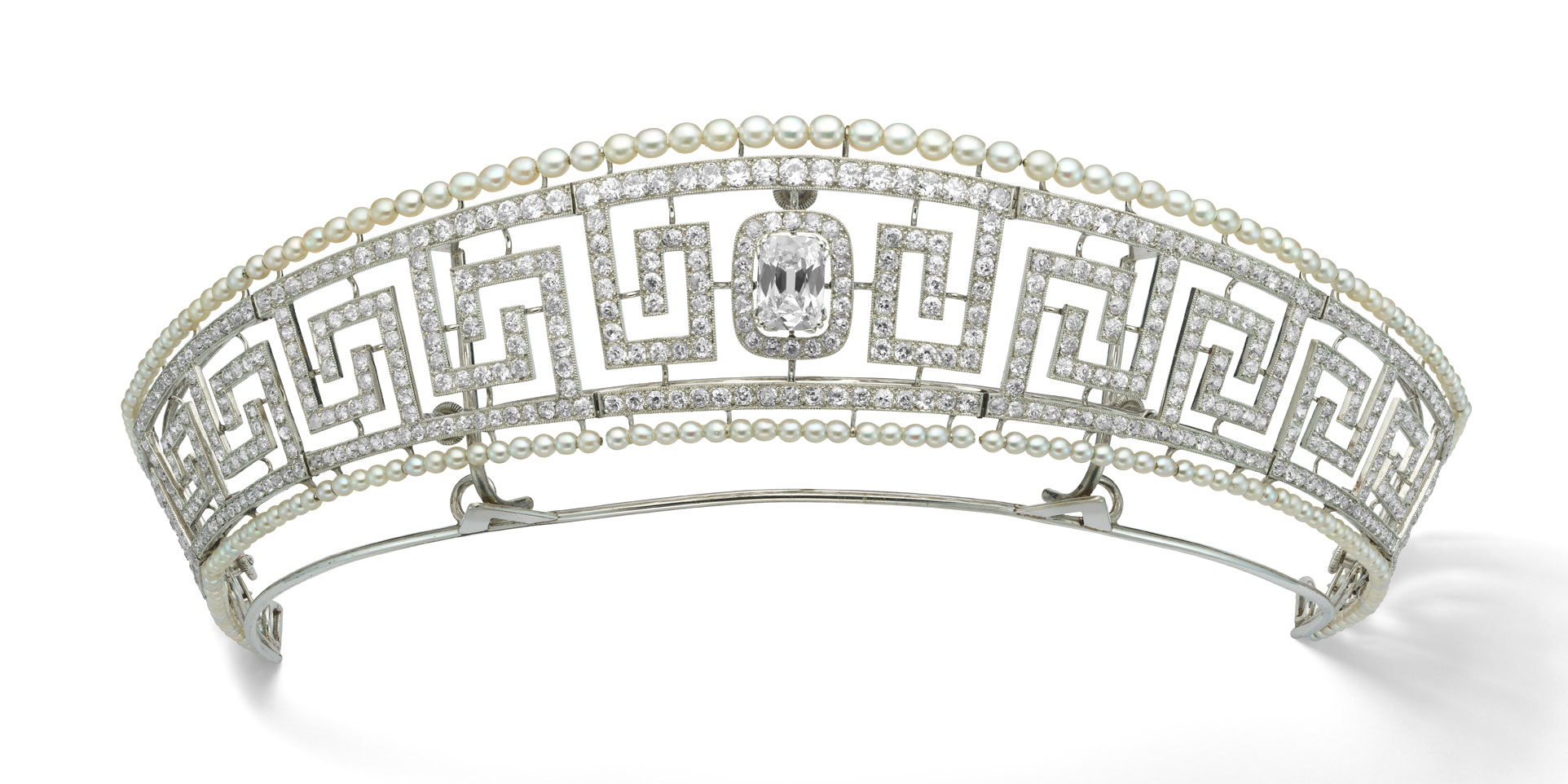
Image: Diamond and pearl tiara saved from the Lusitania, Cartier, Paris 1909
The Cartier diamond tiara was fatefully taken by Lady Allen on board the Lusitania, travelling from New York to Liverpool, where she was accompanied by two of her three daughters, Anna and Gwendolyn, two maids, and a host of luggage.
The Sinking of the Lusitania
Cunard’s Lusitania began operational service in 1907, the largest and certainly one of the fastest ocean liners crossing the North Atlantic. Although the Lusitania was considered for requisition by the British Government at the start of the First World War, the liner was ruled out due to the immense quantities of coal that such a large ship would consume, at a time when endurance rather than speed was becoming important.
The Lusitania continued to operate as a commercial liner, carrying thousands of passengers back and forth from Europe to America.
Early in 1915, Germany declared the sea around Britain to be a war zone. Although, the German Embassy placed a warning on an advertisement for the Lusitania’s May 1915 voyage that Lady Allen was destined to board, many felt that the ship’s speed made her safe.

Image 1: Marlene Dietrich onboard the Queen Elizabeth, arriving in New York, 21 December 1950
Image 2: Detail of silk georgette and glass beaded Salambo dress, Jeanne Lanvin, Paris 1925
Perhaps Sir Hugh Allen’s long family association with the shipping industry gave his wife the encouragement to continue with her voyage? It was to prove a tragic decision; Lady Allen lost both of the daughters as the Lusitania was struck by a German torpedo.
Sinking within 18 minutes, the liner’s celebrated speed was one of the very factors that contributed to the significant loss of life as many of the lifeboats were dragged under water - only 791 of the 1,989 who travelled that day survived. Heartbreakingly, the tiara itself was rescued from the wreckage by one of the Allen’s maids.
The Plant Mansion and Necklace
Pierre Cartier was symbolic of an era of global travel and international business. Establishing the American office of his father’s Parisian jewellery business on Fifth Avenue in 1908, it was from New York that he built the company into the legendary brand name that it is today.
Cartier’s current flagship store in the city was originally built in 1905 for Morton F Plant, a wealthy railroad magnate, by architect Robert W. Gibson. Morton Plant’s wife Maisie encountered Cartier in 1917, becoming enamoured by a double-strand necklace of 128 flawless natural pearls.
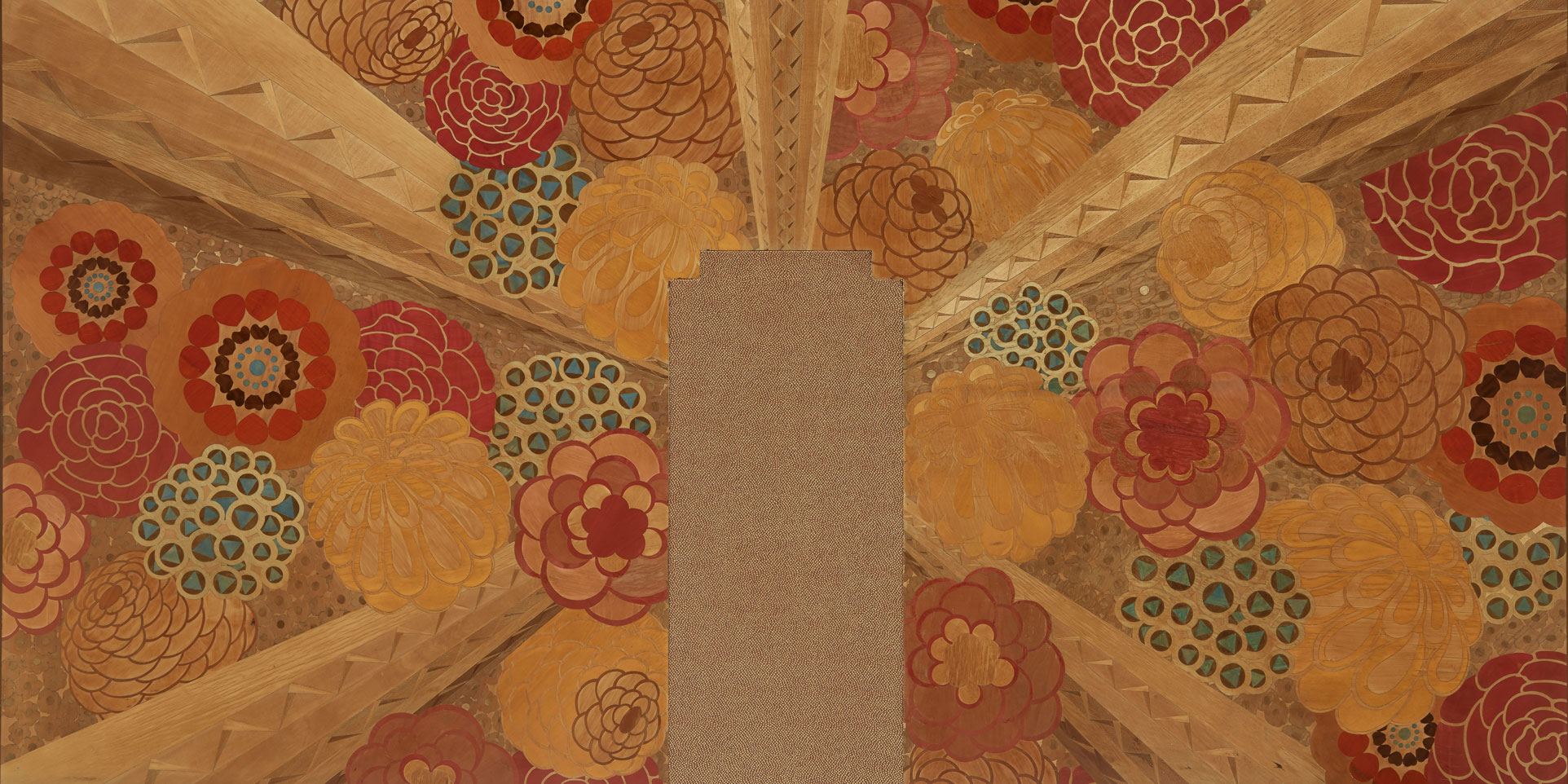
Image: Wooden wall panel from the Beauvais deluxe suite on the Île de France, 1927
Cartier offered her husband a trade—the $1 million rare necklace plus $100 for the 52nd Street and Fifth Avenue mansion which would become his new boutique. At the time of the deal, the Plant’s home was valued at $925,000.
The End of an Era
It was not to prove a good deal for the Plants. Only a few short years later, the value of Mrs Plant’s pearls would dramatically decrease. Across the seas in Japan, Kokichi Mikimoto began to take his cultured pearls beyond Tokyo to international markets. Mikimoto launched his first overseas store in London in 1915, transforming the market for pearls as we know it today.
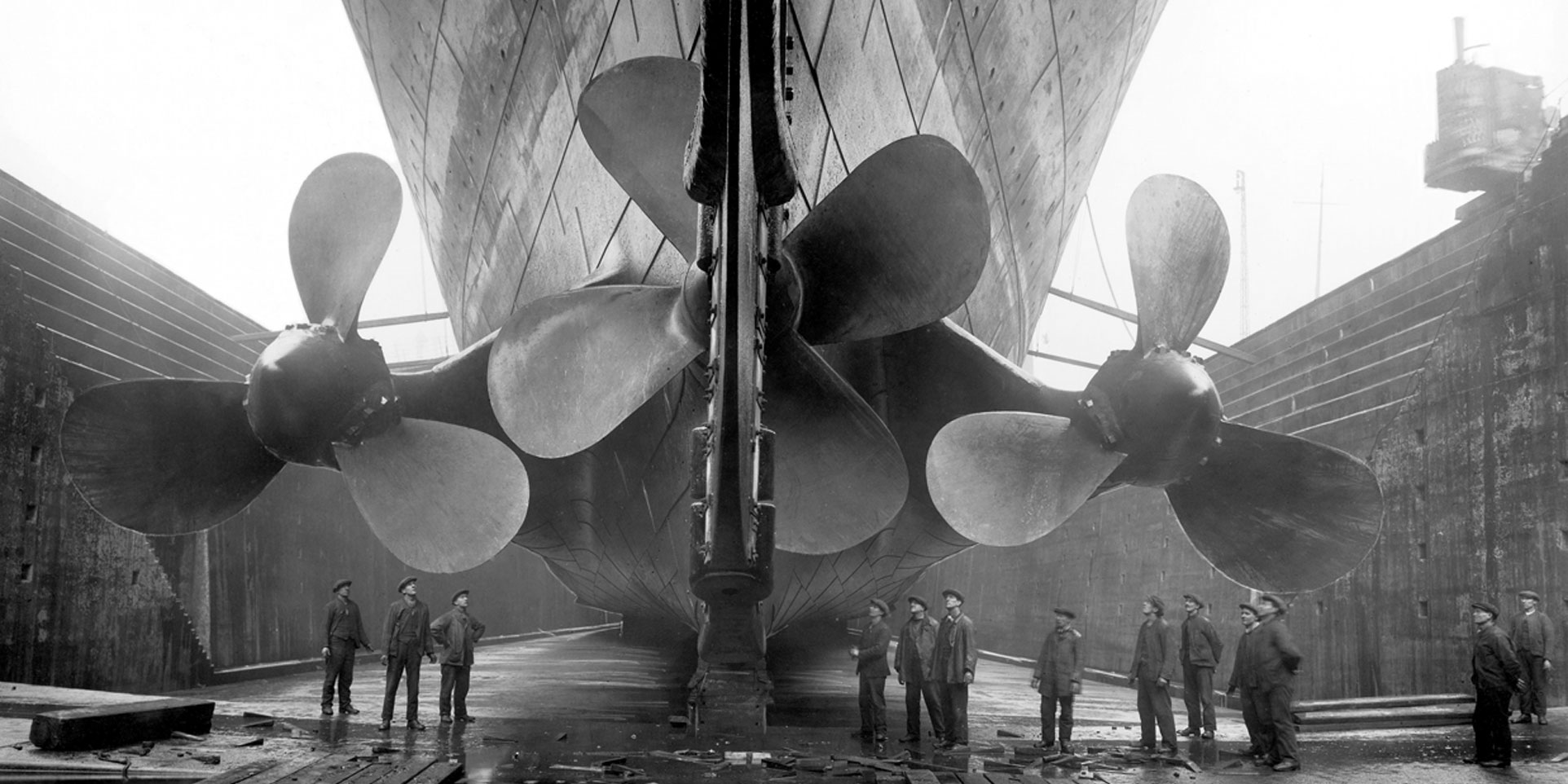
Image: Titanic in dry dock, c1911
As cultured pearl technology and farming overtook the natural pearl, and greatly broadened the market for these gems, so too would ocean travel for the super rich be superseded by the aeroplane. On 1st January 1914, the St. Petersburg-Tampa Airboat Line became the world's first scheduled passenger airline service, marking the beginning of the end of the era of seaborne glamour.
An unique opportunity to revisit this sophisticated form of travel, the V&A exhibition 'Ocean Liners: Speed and Style' continues until 17th June 2018. -
The spectacular rise and style of Rose Gold
The spectacular rise and style of Rose Gold
What do Apple, Birkenstock, Beats and Hervé Léger all have in common? They have all succumbed to the appeal of a material that jewelers have long celebrated – rose gold.
Now a major colour trend across homeware, technology and accessories, rose gold adorns products that are as diverse as Wet N Wild lip gloss and the iPhone. Recognising its popularity, in 2016 the Pantone Institute chose a blend of warm Rose Quartz with a more tranquil Serenity blue as its Colour of the Year, influencing product design and direction.
What is rose gold?
Rose gold is a composite gold alloy of 75% yellow gold, 22.25% copper and 2.75% silver. It finds its purest form as Crown Gold, a 22 carat mix of 91.667% yellow gold and 8.333% copper. This alloy has been used to mint British Sovereign coins since Henry VIII introduced it in 1526.
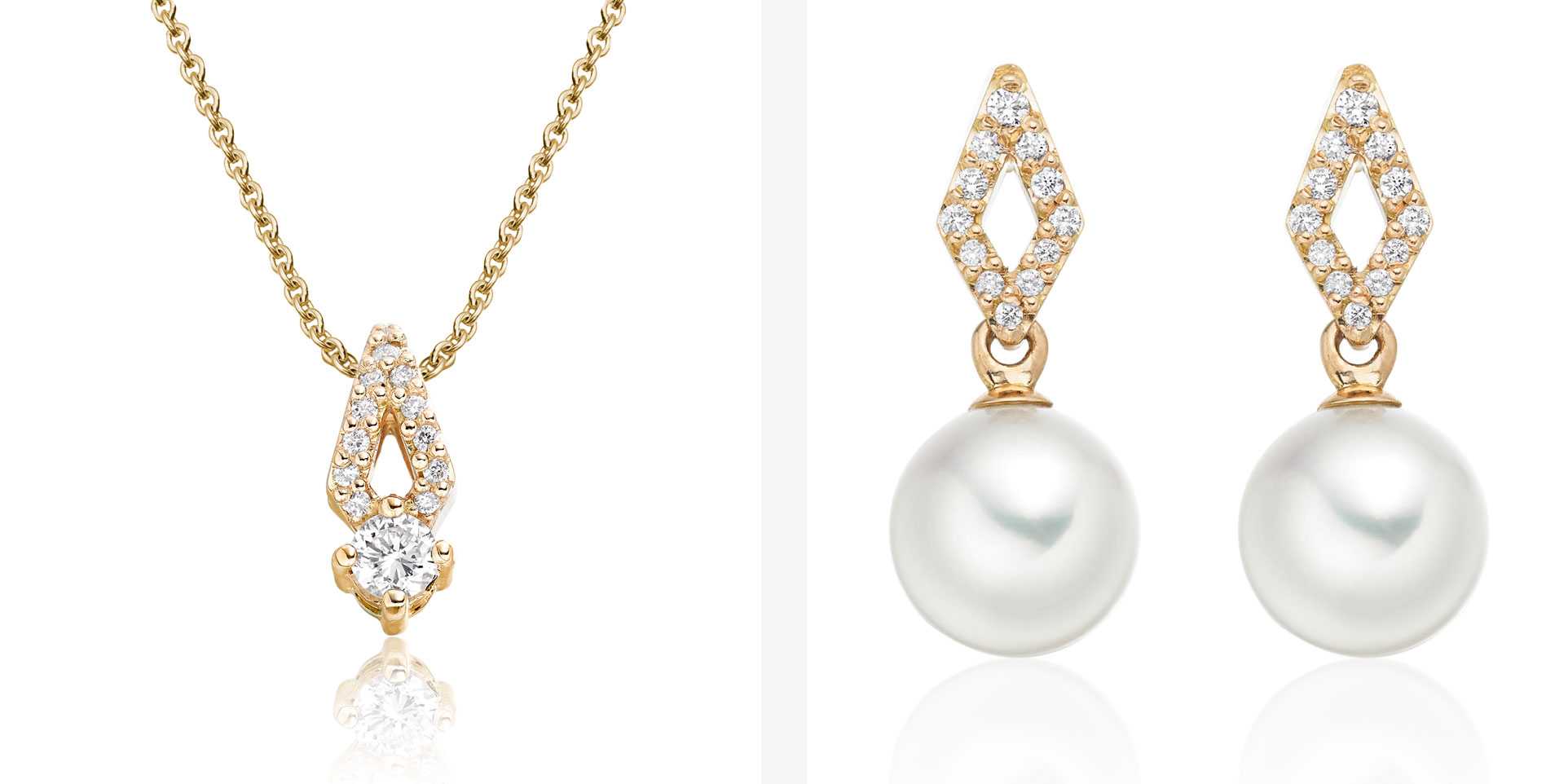
Image 1: Zigzag Diamond Pendant
Image 2: Pair of Zigzag Diamond Earrings with Akoya Pearls
Variations such as pink and red gold arise from modifications to the amount of copper and silver that are added to the mix, either amplifying or lightening the dusky rose tones.
What are its origins?
The history of rose gold also finds an echo in its last golden age: in Imperial Russia at the beginning of the twentieth century. Royal jeweler, Carl Fabergé, popularized the metal as a royal favourite, creating some of his most ornamental pieces in delicate blush tones.
Most famously, the “Moscow Kremlin” egg was commissioned by Emperor Nicholas II as a gift for his wife. The gold and white enamel egg was housed within a miniature replica of Red Square’s fifteenth century Spasskaya Tower and, at 11,800 rubles, was one of Fabergé’s highest value commissions.
Rose gold rising
Symbolism is undergoing a significant and seemingly unstoppable popular revival, particularly in jewellery. The emotional impact of its colour, with all its myriad interpretations and meaning, is widely studied by designers and marketeers alike.
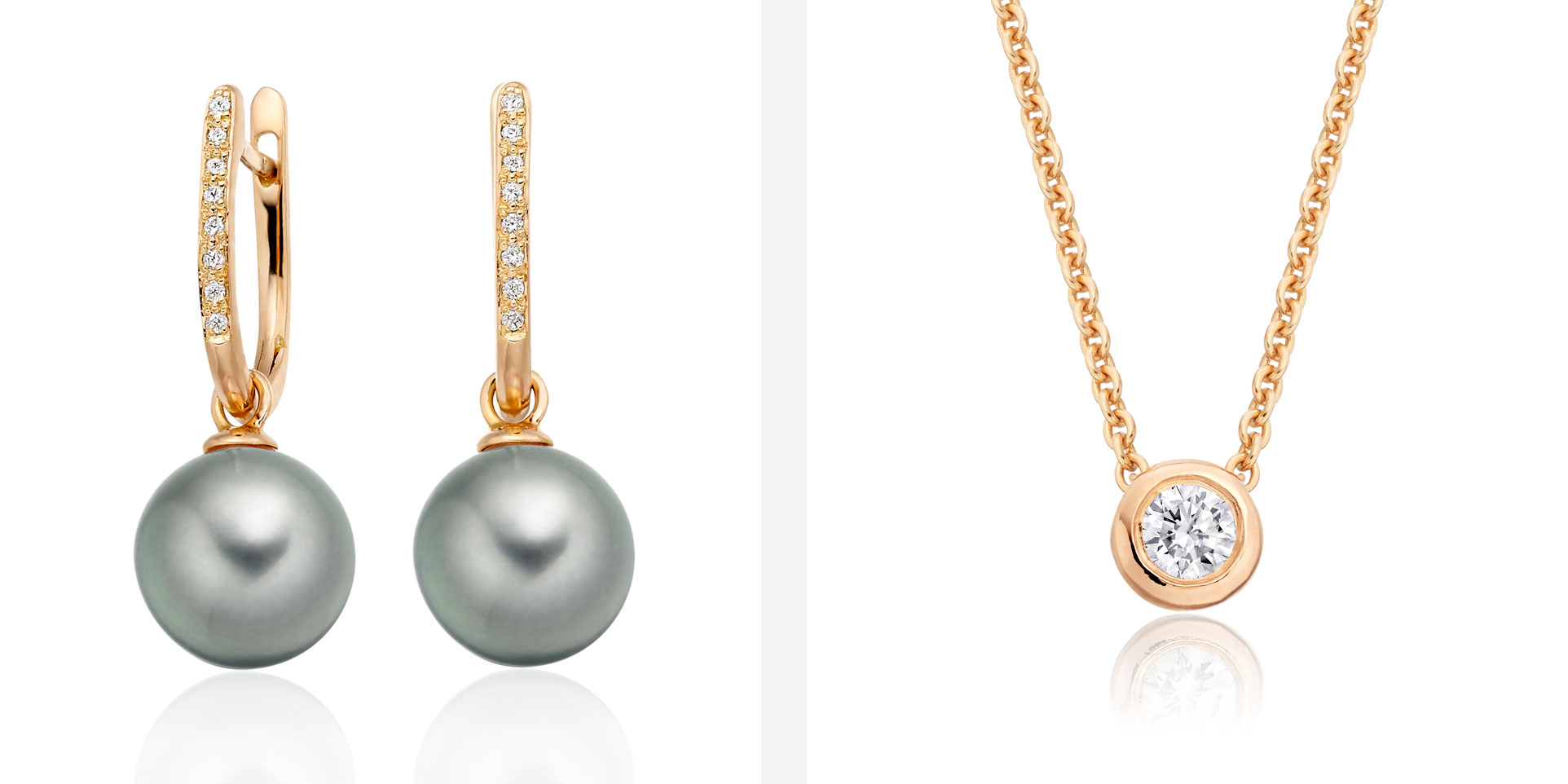
Image 1: Grey Tahitian Pearls with Diamond Leverback Earrings
Image 2: Classic 0.10ct Diamond Pendant
“When we get to the rose family,” says Leatrice Eiseman, the Pantone Institutes’ executive director, “we get ‘compassion, composure, warmth’, something that draws you in.”
One of the reasons for rose's popularity today is that, for consumer goods companies, this warmth has huge potential in attracting new customers. In growth markets such as China, the luxury connotations of gold and the “sense of mindfulness” that Eiseman identifies with its rose-hued cousin has significant appeal.
On trend for the autumn
In jewellery, Dior, Piaget and Van Cleef & Arpels have led the trend towards rose gold’s revival as a high jewellery material. Rose gold is a natural canvas for coloured stones, and brings delicacy as well as warmth to the traditional combination of white pearls with diamonds.
At Winterson, our Classics collection includes some of our most popular jewellery designs, that have been finished with 18 carat rose gold, white diamonds and pearls.
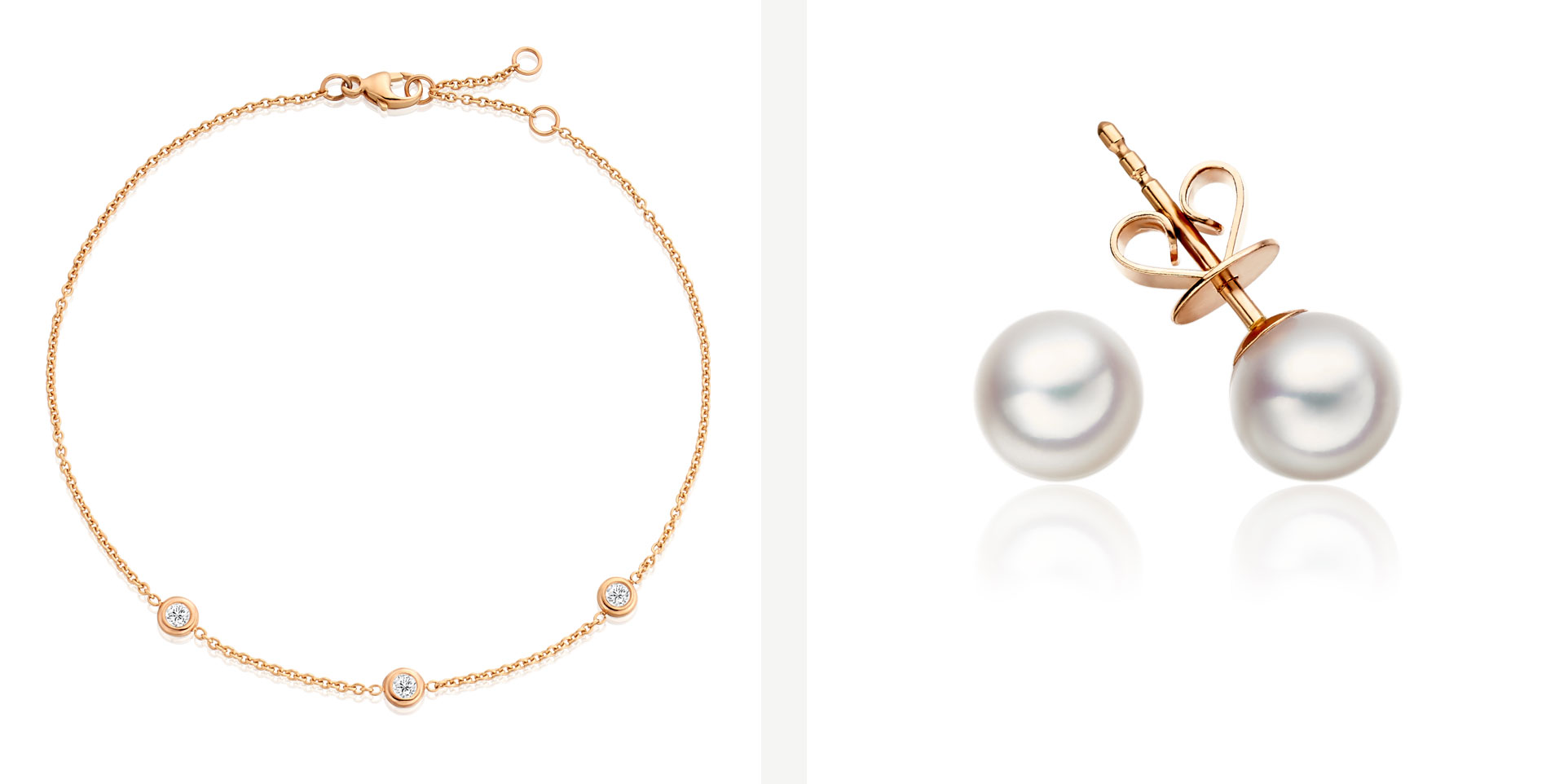
Image 1: Classic 0.12ct Diamond Bracelet
Image 2: Classic White Akoya Pearl Stud Earrings
There are many ways to wear this beautiful style of gold. We love the femininity of the rose gold and white diamonds of our new triple diamond bracelets and the elegant addition of light grey Tahitian pearls to our rose gold and diamond leverback earrings. The lovely combination of rose gold with the blush overtones of a white saltwater pearl in our Classic Akoya pearl studs might be the simplest and also the best.
Already a fan? Wholeheartedly embrace the trend with our striking Luna Moss ring in rose gold, green sapphire and a stunning peacock green Tahitian pearl. -
Rock Star – The Impressionist Jewels of Andrew Grima
Rock Star – The Impressionist Jewels of Andrew Grima
The largest private collection of Andrew Grima jewellery to appear at auction goes on sale at Bonhams, London this autumn. In this article, we take an admiring look at his work.
Andrew Grima is recognized as one of the great modernist jewellery designers of the 20th century, perhaps the most influential post-war British jeweller.
Such was his influence that Grima jewellery remains highly prized, attracting collectors such as Marc Jacobs and Miuccia Prada, design talents who themselves have defined their generations. In this, he is the designer’s designer - one of the 20th century’s most daring and imaginative.
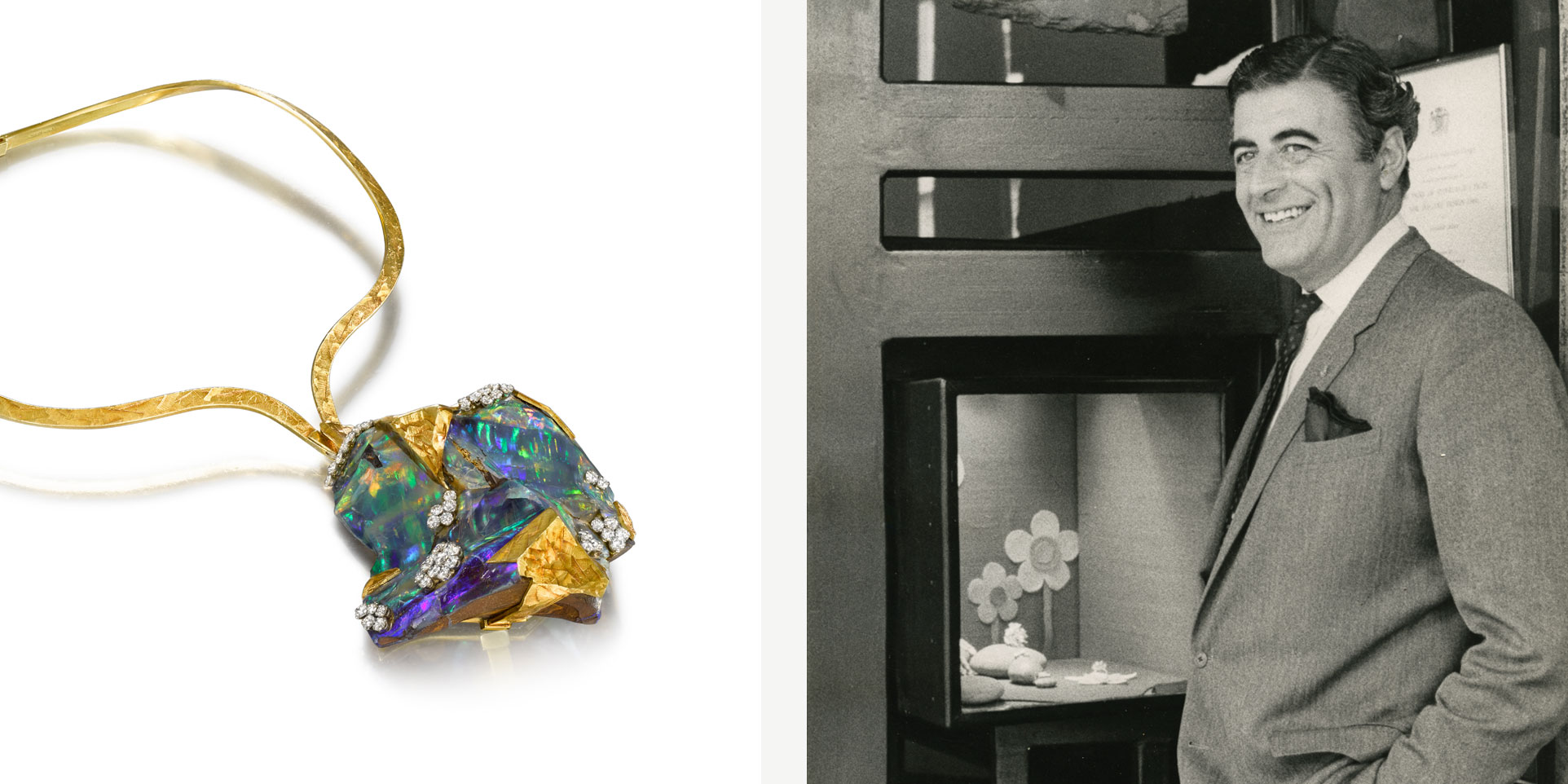
Image 1: Opal Boulder Pendant
Image 2: Portrait of Andrew Grima
As a result, expect to see a wave of excitement in London this September as one of the largest private collections of jewels by this extraordinary designer ever to appear at auction goes under the hammer at Bonhams.
One of a handful of designers who revolutionized British jewellery in the early 1960s, Grima didn't learn his trade at art school, being entirely self-taught and never trained at the jeweller’s bench. He considered being a pure designer to be an advantage – his imaginative ideas were never confined by technicalities or ingrained concepts of what constituted fine jewellery.
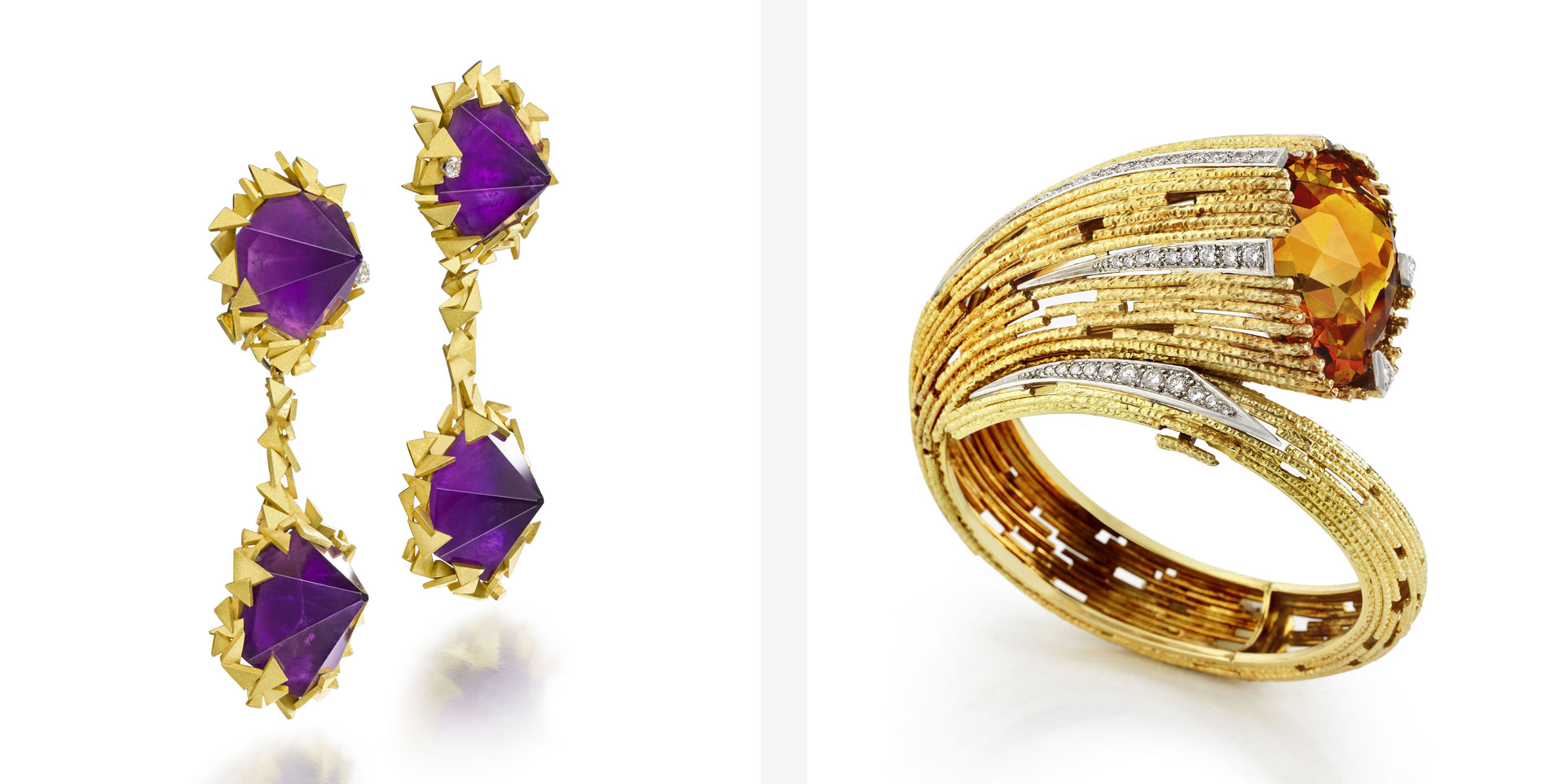
Image 1: Amethyst Earrings
Image 2: Citrine Diamond Bracelet
Grima’s groundbreaking designs, which drew inspiration from art, sculpture and the natural world, injected desperately needed originality and glamour into what had become a stagnant jewellery scene in post-war Britain. He created bold and unusual jewels whose value lay in their aesthetic composition rather than just in the carat weight of expensive diamonds and precious gems.
His journey began, appropriately, with a large cache of natural Brazilian stones - aquamarines, citrines, tourmalines and rough amethysts – that became a trademark for the young designer. Scouring the natural world for textures – bark, shell, moss – he created abstract shapes with rough stones at a scale that was distinctly different even from that of Jean Schlumberger and Fulco de Vedura, both bold and radical designers in their day.

Image 1: Pearl Ring
Image 2: Pearl Earclips
He also perfected direct casts from nature in what became one of his most distinctive styles, famously capturing in gold some lichen for HM Princess Margaret, covering the results – and similar temporal fragments – with a scattering of diamonds.
The 1960s saw the charismatic Anglo-Italian emerge as the go-to society jeweller for royals, celebrities, socialites and artists and his earliest clients included HM The Queen, the Princess Margaret, Jackie Kennedy Onassis and Bond Girl Ursula Andress. He won the De Beers Diamonds International Award (the Oscars of jewellery design) a record 12 times and, in 1969, was commissioned by Omega to create one of the most outrageous and daring watch collections ever made. In 1970 he was also granted a Royal Warrant from HM The Queen.
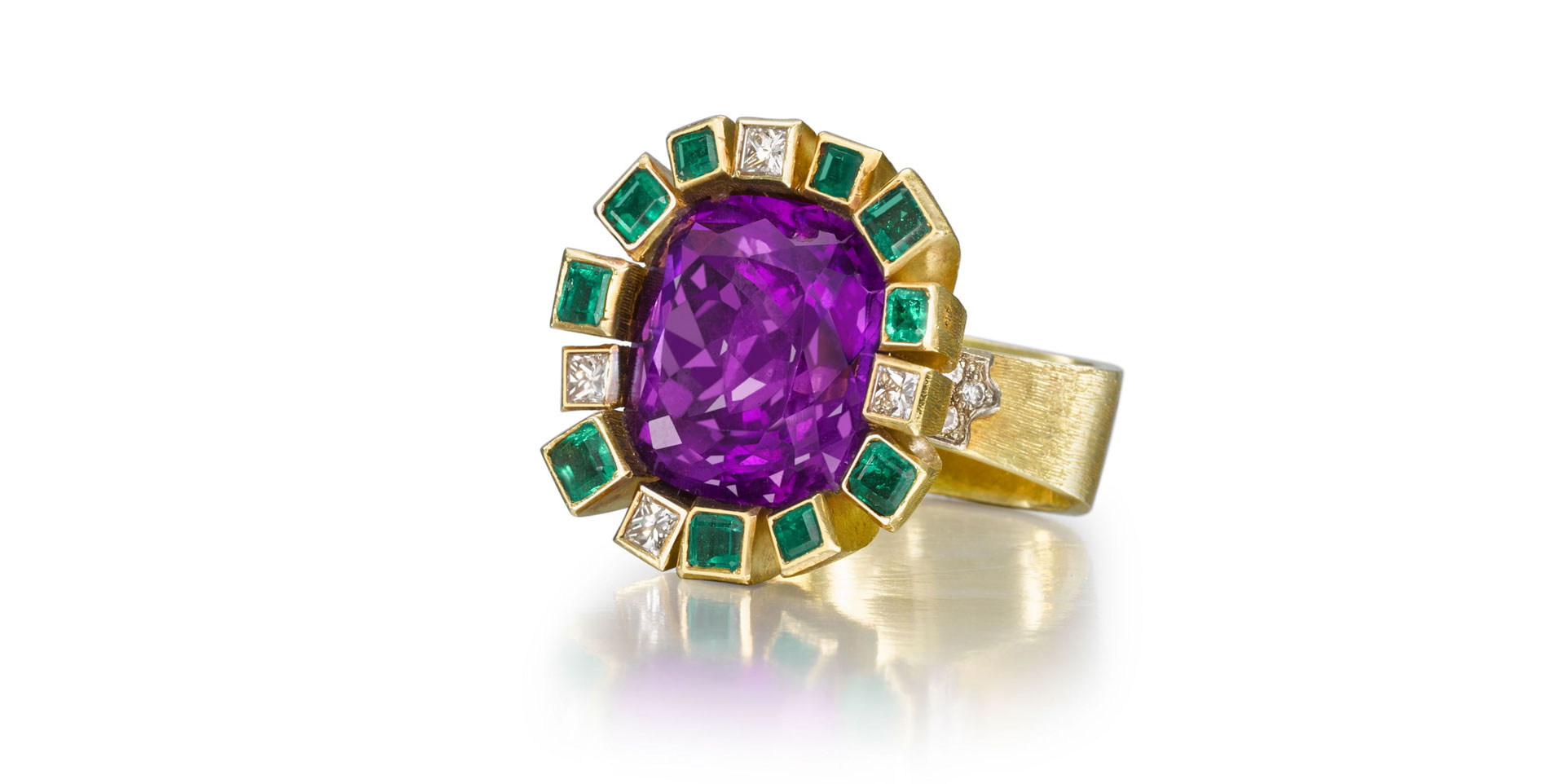
Image: Amethyst Ring
His interest in natural forms extended to a love of both opals and pearls, which featured regularly in his work. Each of the gems is defined by individual uniqueness in the way that they are formed – no one piece looks quite like another in terms of fire or, in the case of pearls, lustre and overtone.
The Bonhams sale features a gold, boulder opal and diamond pendant/necklace from 1972, alongside a selection of 55 pieces from his legendary collection for watchmaker Omega, and an additional 30 jewels, featuring his trademark palette of citrines, amethysts and aquamarines.
“Andrew Grima’s work is distinct in terms of its design, quality and originality,” says Emily Barber, Director of Bonhams Jewellery. “He was essentially an artist whose medium happened to be jewellery. His designs capture the spirit of each era in which he worked yet are still immensely wearable and contemporary today.”
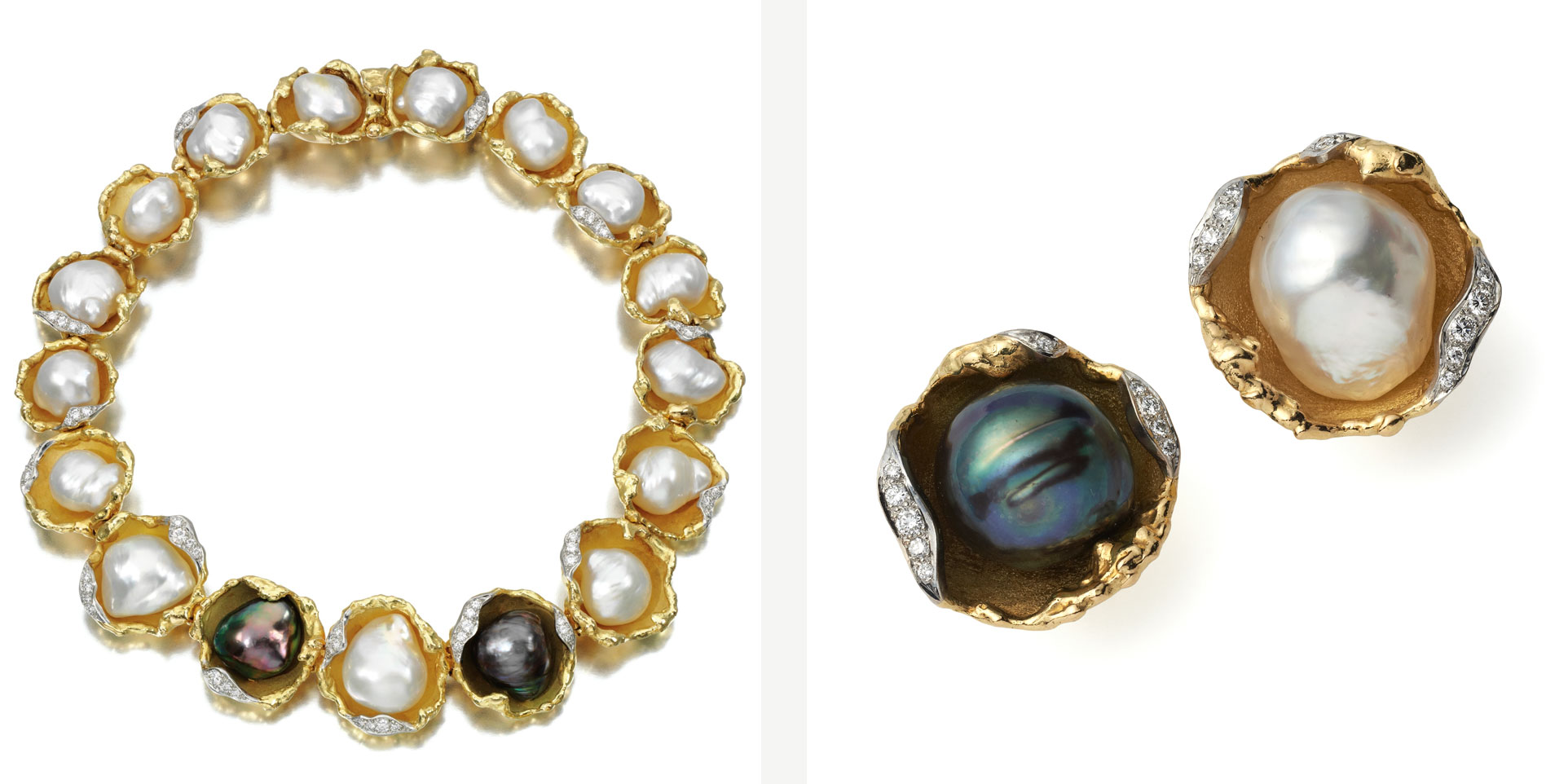
Image 1: Pearl Oyster Necklace
Image 2: Pearl Earclips
The current owner of the collection, who wishes to remain anonymous, commented: “When you look at a piece of Grima jewellery you are moved by exquisite artistry in much the same way that you would be moved standing in front of a beautiful painting. In fact, for me, Andrew Grima is the great impressionist of jewellers.”
The Bonhams sale of Fine Jewellery, including a Private Collection of Jewels by Grima, will be held on 20th September 2017. Learn more about Andrew Grima, and the continuation of his work by his wife Jojo and daughter Francesca, here. -
Interview with Melanie Georgacopoulos
Interview with Melanie Georgacopoulos
Melanie Georgacopoulos is renowned for her work reinventing the pearl for a younger 21st century audience. Today’s renewed fascination with the gemstone owes much to this young designer, a graduate from London’s famous Royal College of Art. The Winterson Journal talks to Melanie about her new avenue of exploration with the pearl.
Without inhibition, Melanie Georgacopoulos has sliced, drilled, quartered, caged and wrapped pearls in illusions of knots in her mission to bring this extraordinary gemstone to a new generation of jewellery buyers.
Her most recent collection, MOP Shell, directs her inventive energies to Mother of Pearl. Otherwise known as the material nacre, it is produced by mollusks as an inner shell layer as well as forming the outer coating of the pearls themselves.
What drew you to mother of pearl?
Natural Mother of Pearl has been used by many cultures all over the world, to create both expensive and inexpensive items. It is a strong, resilient and iridescent material that has been used for thousands of years, mainly in the form of inlay, which you see a lot in East Asian and Islamic religious art.

Image 1: MOP Emerald Earrings - Peacock
Image 2: MOP Diamond Dress Earrings - Peacock
At the same time, it was a popular material for more common Victorian household items such as knife handles and buttons, as well as Chinese gaming counters and delicate caviar spoons. I think it’s this heritage as a material that can move from high to low that originally sparked my interest.
You often look for the subversive angle in your design; what was the twist with mother of pearl?
As a material it is more widely used than pearls, but despite its popularity, it has never reached the pearl’s symbolic status. I felt that mother of pearl was ready for a reassessment, in the same way as the pearl felt for me back in 2007 when I first started to play with them in the studio at the RCA.
Pearls were so associated with the twin-set on one hand, and the ostentatious fakes of Coco Chanel on the other, that the gemstone felt like a really rich place to mine deeply for inspiration. Mother of pearl is in the same place really. One rarely sees it used in fine jewellery today and I wanted to explore whether it was possible to challenge those perceptions.
Your pearl collections tend to focus on the monochrome beauty of the gem, where MOP Shell really plays with the fabulous colours of the material. How did it feel to play more with colour?
The collection really aims to celebrate mother of pearl’s qualities as a material, and showcase its various beautiful, rich colors. It comes in soft pink, crème, white, peacock and golden yellow with many variations.
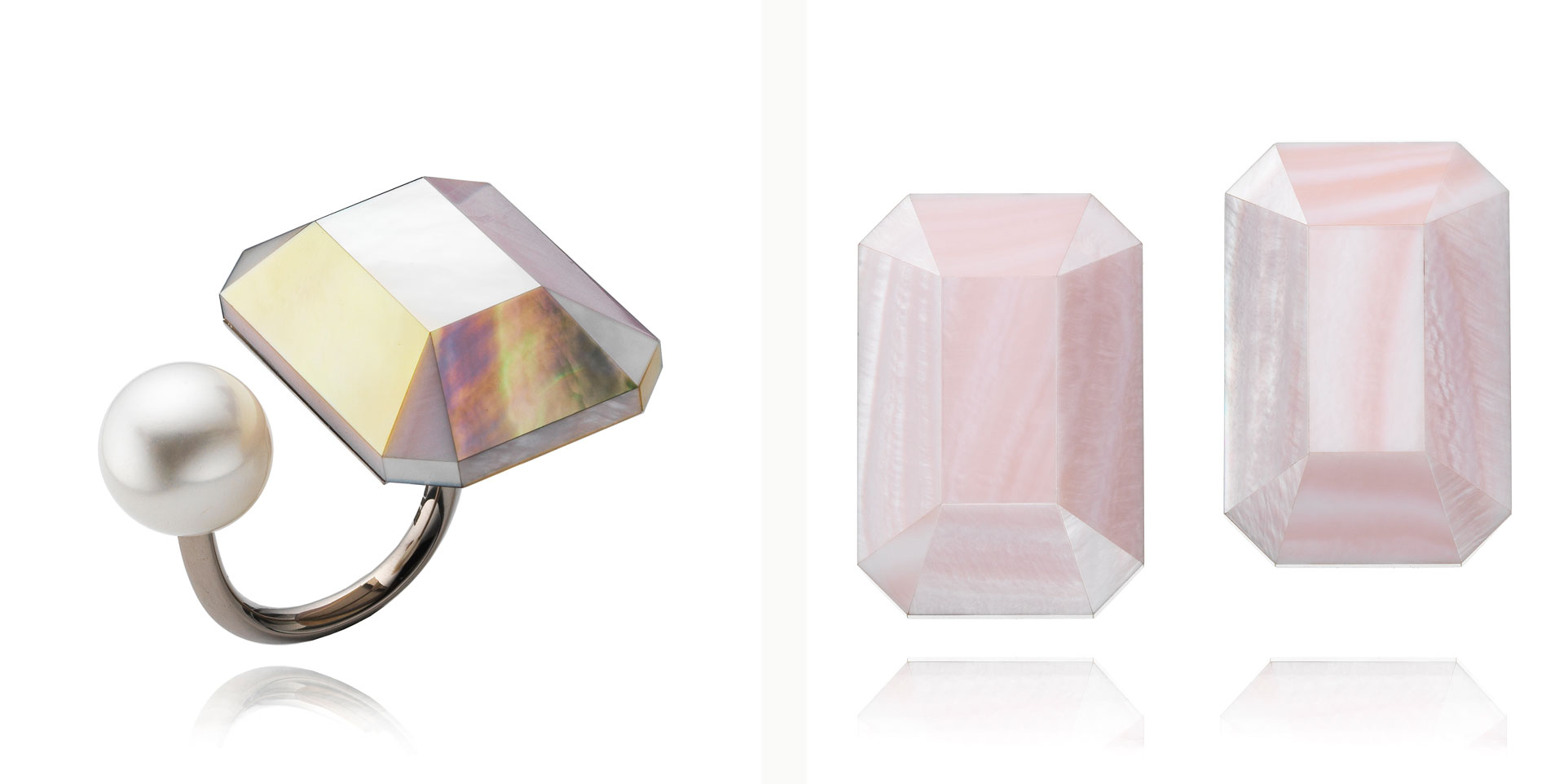
Image 1: MOP Emerald Ring - Multicolour
Image 2: MOP Emerald Earrings - Lavender
It was actually really refreshing to work with a flat material that has such striking colours and work out how to combine them. I’ve enjoyed this so much in fact, that my next collection focuses even more on these diverse colour combinations and how they change depending on the light.
You enjoy exploring the meaning of value in jewellery by playing with the forms of other classic precious gemstones – diamonds and emeralds – and that theme re-emerges here. Can you tell us a bit more about that?
When mother of pearl is used in jewellery, it's mainly seen flat and as an inlaid form. By taking this flat material and creating seamless three dimensional diamond and emerald shapes, I felt I could really push further my exploration into the relationship between gemstones and pearls in contemporary jewellery.
The pearl has moved on and off lists of precious stones over the centuries – from being the height of luxury and value in the time of Cleopatra to being close to worthless in the late 20th century due to overfarming. I think I have always been interested in playing with perceptions of value, asking questions in particular about the value of design and how people perceive that.

Image 1: MOP Emerald Ring - White
Image 2: MOP Emerald Earrings - White
These pieces are strikingly simple, made of relatively poorly perceived materials, and yet the high craftsmanship and labour intensive production that each piece requires elevates the material far beyond any financial worth one might place on the components.
What drew you to jewellery originally and what’s the Melanie Georgacopoulos design philosophy?
I first studied sculpture and my love of jewellery comes from the fact that it relates to the body. I’m also fascinated by the connection that people have to the jewellery they pass on one generation to another.
One of the reasons I think I may have been subliminally drawn to pearls is that my grandmother wore a pearl necklace every day, and that idea of creating something that is worthy of becoming so intimately connected with a person’s identity really interests me. Good design, for me, is innovation, longevity, and has to represent its time. I strive for this with every piece.
View more jewellery by Melanie Georgacopoulos here. -
Interview with Designer Vicky Lew
Interview with Designer Vicky Lew
Malaysian-born Vicky Lew started her creative life in her father's footsteps, excited by the gemstones and decorative elements that he used to create his footwear designs.
After realising that jewellery offered her greater opportunity to explore these sparkling gemstones - and across all of the the body, not just the feet - Lew travelled to London to study on the famous BA Jewellery course at Central St Martins.
Since graduating, she has gone on to secure the attention of Swarovski and Cartier, where she worked as a graduate, as well as winning a place on the prestigious Goldsmiths Kickstarter programme.
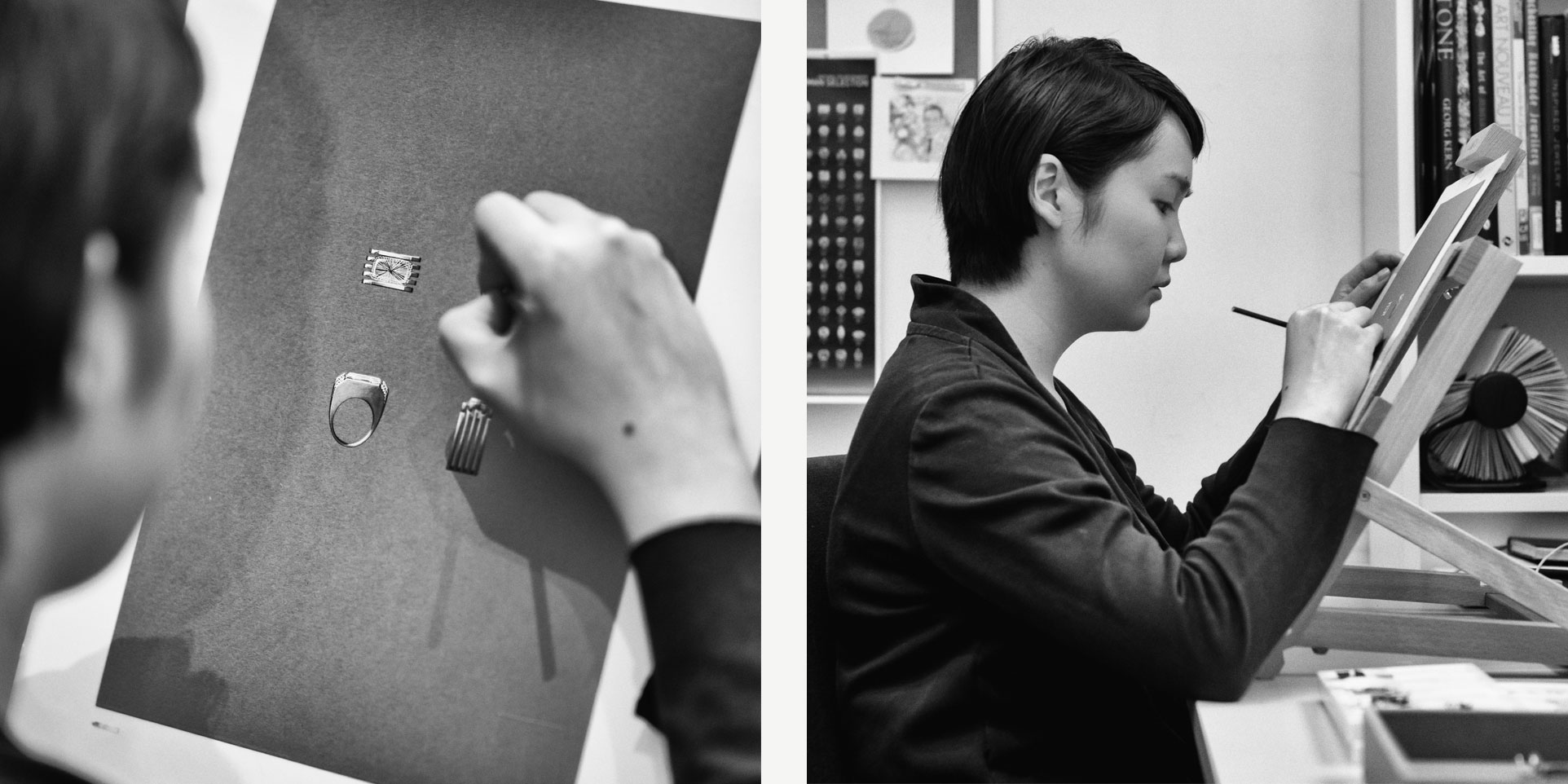
Vicky Lew refuses to be bound by traditional jewellery concepts, combining aluminium with gold, creating visual illusions with diamonds and sapphires as hidden flashes, and juxtaposing organic materials such as pearls next to geometric settings. The Winterson Journal explores Vicky’s design inspiration in this first interview in a series that will explore the love that contemporary designers have for pearls.
What are the main themes in your work?
My inspirations and ideas came from my own experiences, I like to reflect in what I have seen and some of these thoughts and ideas are often developed with the combinations of repeated forms.
The idea of accuracy and consistency in handcrafted jewellery resonates with me and highlights important characteristics of what I value in great craftsmanship. It takes skill and effort to produce and the result I think is both visually appealing and deeply comforting.
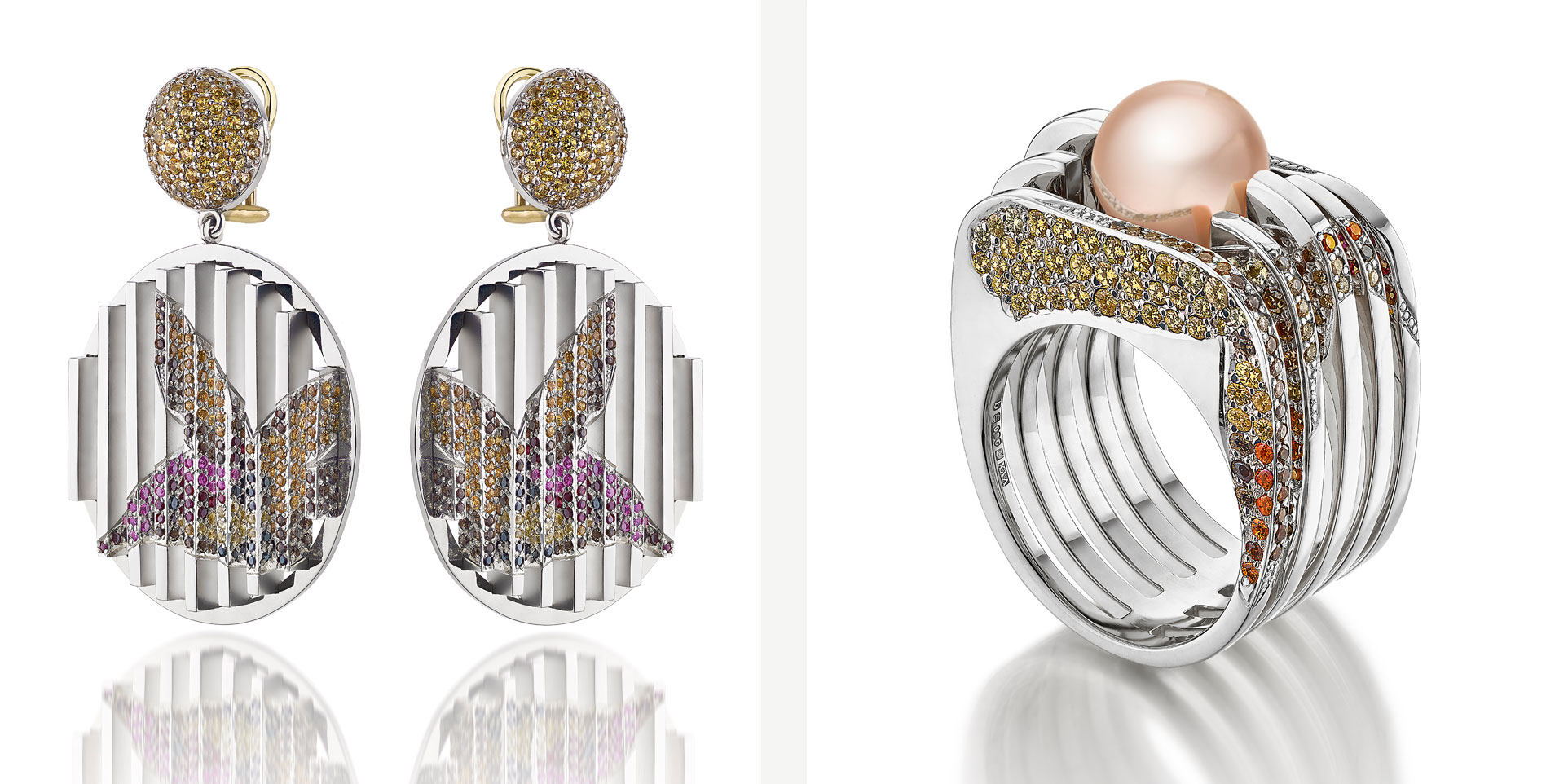
Image 1: Vicky Lew Chrysolampis Mosquitus Earrings
Image 2: Vicky Lew Yellow Chrysolampis Mosquitus Ring
Can you tell us a bit about the inspirations behind the Flight collection?
One morning like any other, I was out searching for inspiration in the parks of London when one of the photos I took happened to capture a moment in time I hadn’t previously paid much attention to - that short interval between a swan idling and flying off.
I thought that what if I could extend that moment somehow, maybe even capture in the way my camera could but with more care and effort, in metal and stone. And so Flight was born.
How has it evolved over the last few years?
My early research began with a study of the bird itself, before re-establishing my focus on the moment of take-off and theme of transience, in which the bird plays a supporting role. The primary sources of my inspiration for capturing these ephemeral moments were Felice Varini and his work in perspective-localized paintings and the graffiti duo Zebrating. Ultimately, Zebrating’s artworks allowed me to draw direct parallels between street railings, their choice of medium, and the linear and repetitive lines of bird feathers.
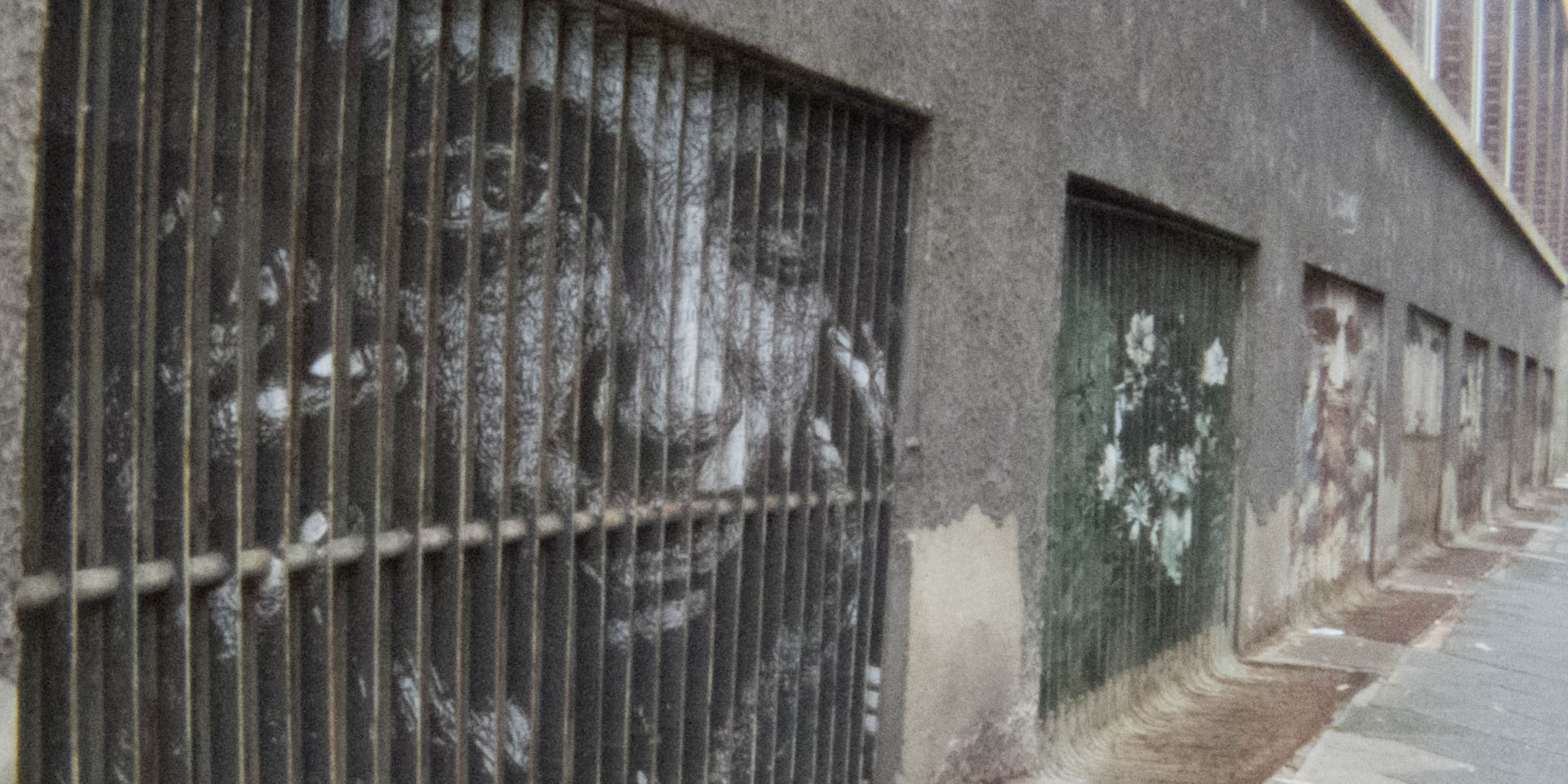
Image: Zebrating
The non-solid forms of the pieces present images of birds in perspective-localized angles. Employing a traditional pavé-setting method, the instantaneous moment of take-off is alluded to through the use of perspective-localized angles, whereby the birds are only revealed to the audience from certain angles. As a result, a fleeting moment is afforded to the audience, giving the gem-set birds movement as the wearer moves.
Material considerations were another important factor; the initial Flight pieces were made in aluminium, set with cubic zirconia. These designs were then refined further and made in precious metals and gemstones, after taking many considerations in weight and wearability.
The relationship between the geometry of the forms, the sparkling natural imagery and the organic quality of the pearl is really interesting.
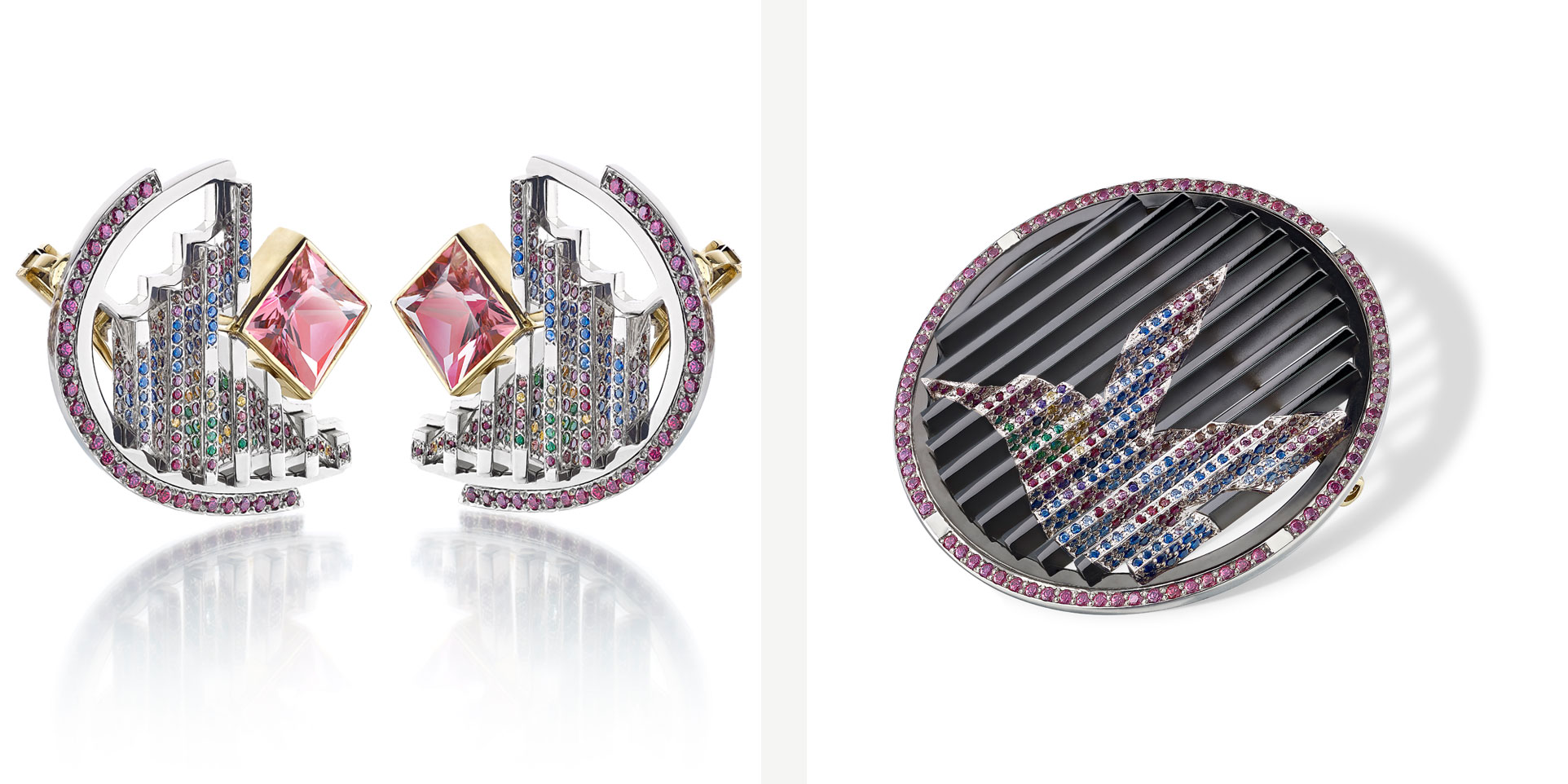
Image 1: Vicky Lew Thalurania Colombica Earrings
Image 2: Vicky Lew Thalurania Colombica Brooch
Can you tell us more about this?
I always love strong and structural forms, however the lines can be quite harsh. By adding organic elements such as a figure of the hummingbird in gemstones and pearls soften the overall look. I also like the contrasting elements gives the pieces an unclassifiable and distinctive quality.
What drew you towards working with pearls?
There is something about pearls, they have an incandescent glow that is unlike any other gemstones. They are also historically significant, women of power were always adorned in strands and strand of pearls, and hence I associate pearls as regal and luxurious.
You've used golden south sea pearls in your work, is there something in particular about these that you find inspiring?
I have always thought that golden pearls have a mythical quality to them that it is almost fictional. I had a dream once about hummingbirds and they laid golden pearls as eggs, so it seems appropriate to use them in my work to project and giving them a fantastical quality.
Tell us a little about what's coming up for you in the next few months.
I will be presenting a capsule collection at Goldsmiths’ Fair this September.
View more of Vicky's work here. -
Hella Jongerius is Breathing Colour at the Design Museum
Hella Jongerius is Breathing Colour at the Design Museum
Breathing Colour, the new show by Hella Jongerius at London’s Design Museum, is the culmination of 15 years of research by one of the Netherlands' most renowned designers.
Graduating from the Eindhoven Design Academy in the early 1990s, Hella Jongerius was part of a generation of young designers exploring the boundaries between conceptual design, industrial production and emotional engagement in objects. Breathing Colour takes a sustained look at the behavior of colour – on flat and three-dimensional surfaces, and across the arc of a day – and our emotional response to it.
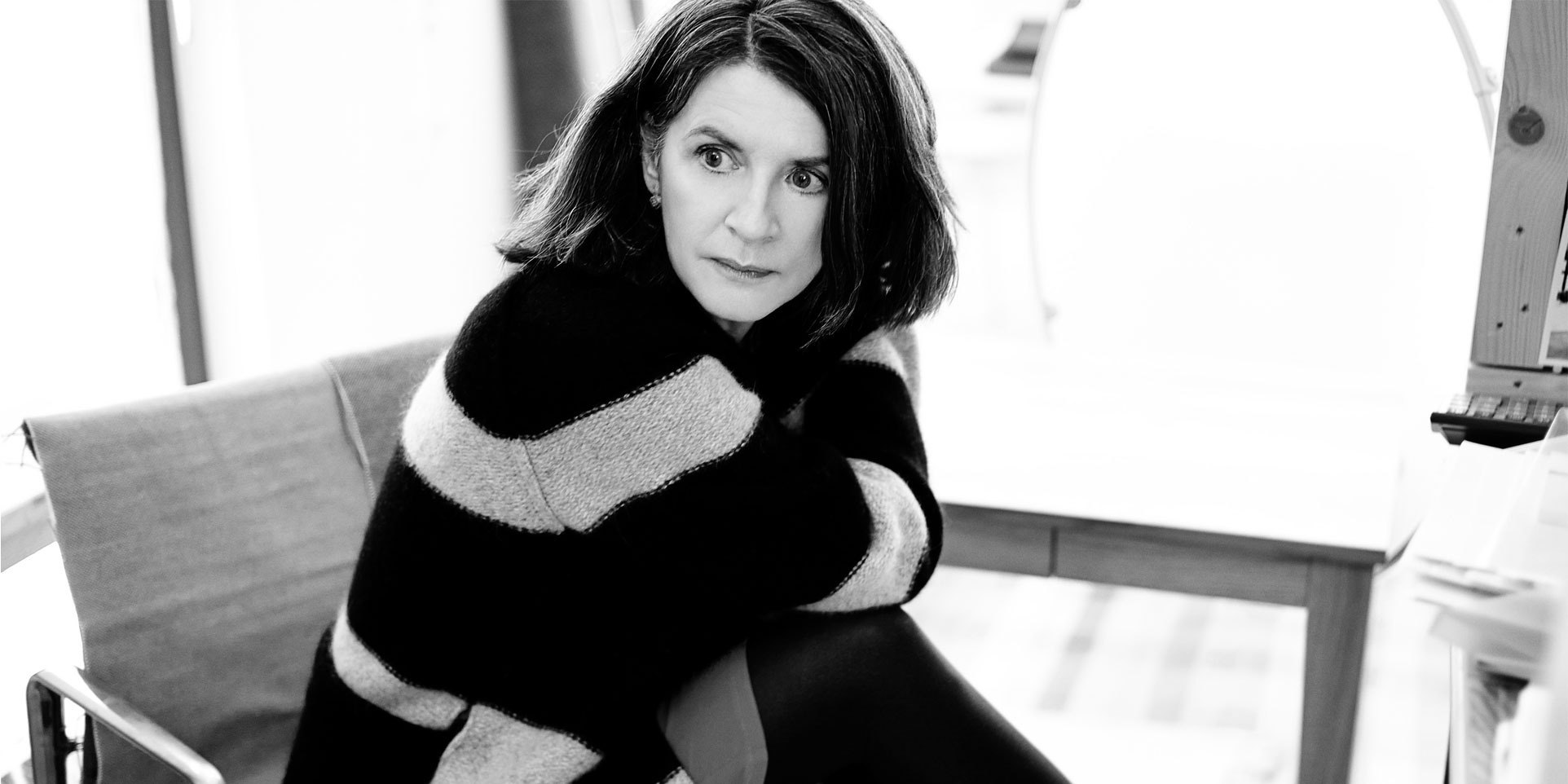
Taking Monet’s Haystack as a starting point, Jongerius makes a case for embracing the way in which colours change at different stages of light intensity across a 24-hour period. She explains, “There is a phenomenon in colorimetry called Metamerism. This was the starting point in my colour research. It occurs when colours are viewed in different conditions, and describes the effect when two colours appear to match even though they might not actually do so.”
Jongerius goes on to explain that much industrial colour research has focused on eradicating what is viewed as a problem, towards a goal of achieving ‘consistent’ colours, “but I want to make a plea to use layered pigments which provide intense colours that are allowed to breathe with changing light,” she states.
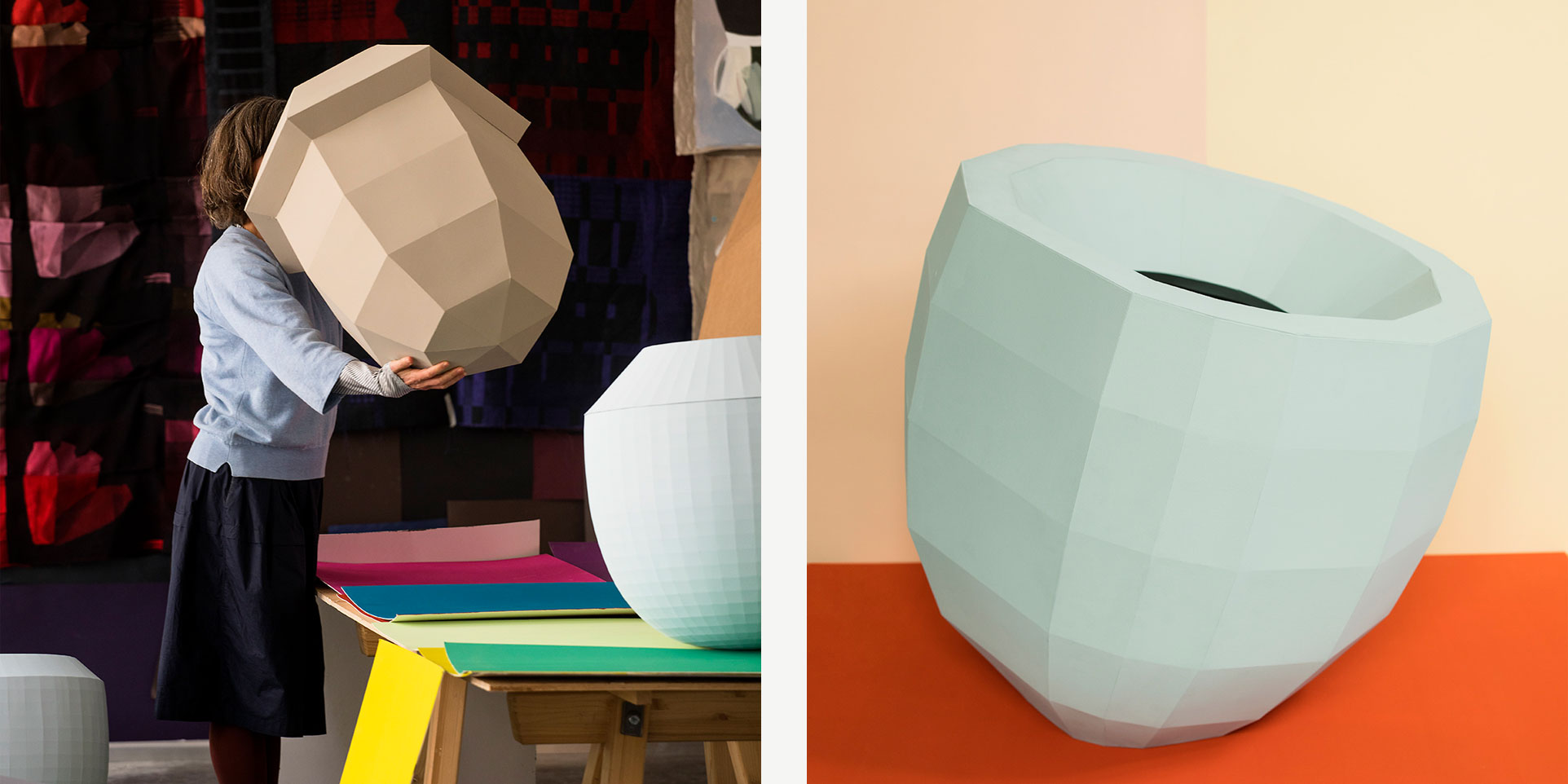
Designed to capture these subtle shifts of light, Jongerius’s Colour Catchers form the spine of the show. Beginning life as complex cardboard patterns, before being realised as large-scale ceramic forms, their convex faceted surfaces absorb and reflect colour to become a series of three-dimensional colour charts – revealing gradations of the object’s own colour, affected by light and mixed with reflections from their surrounding forms.
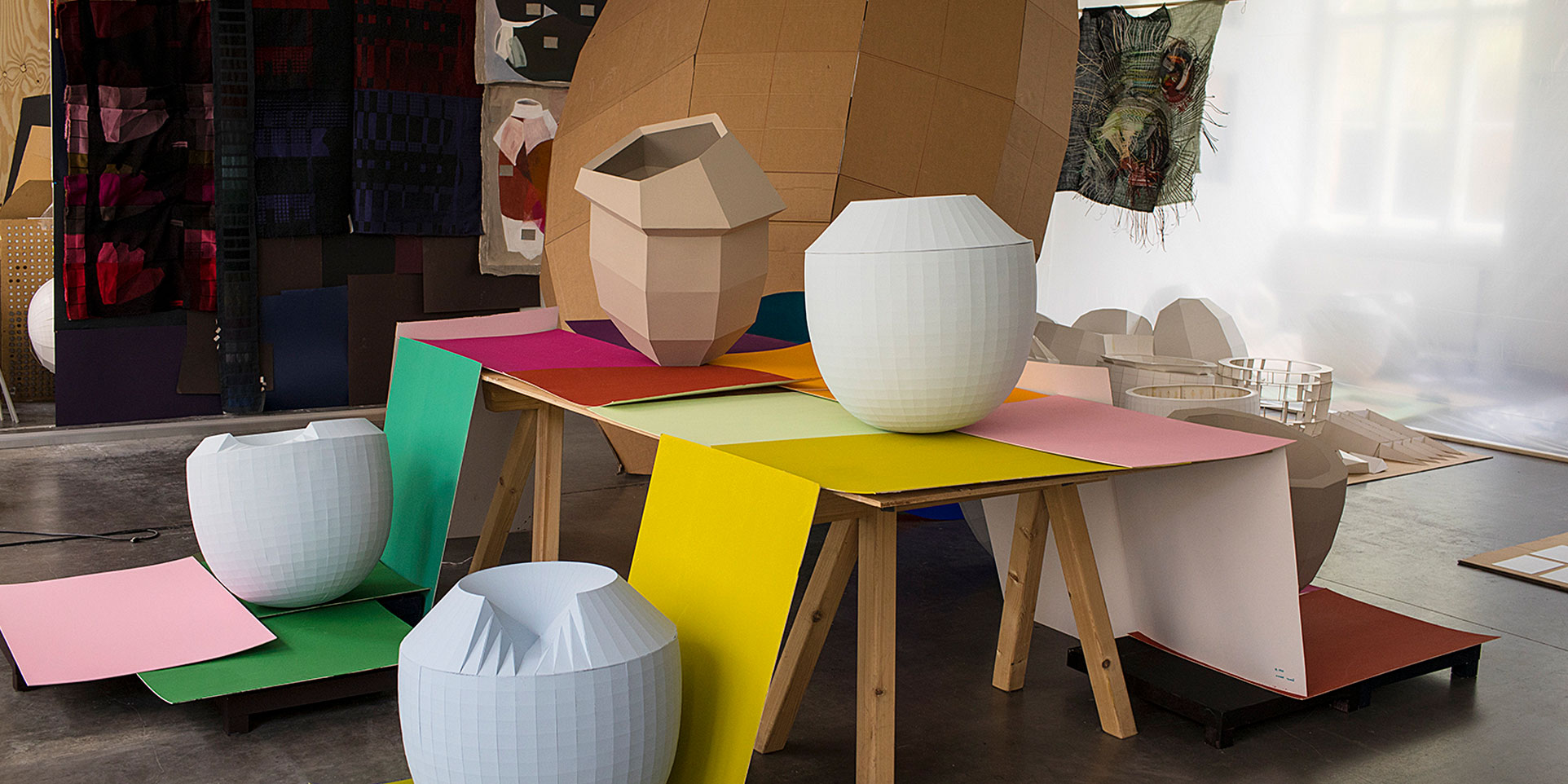
The exhibition sets out to demonstrate how emotionally powerful and engaging it can be to see colour play a mutable role in the design of objects. Beginning in the ‘Morning’, Jongerius captures the hazy quality of dawn light in textile panels and colour crystals, followed by the blue glow of sunrise into the warm intensity of ‘Noon’.
A series of woven panels, the Woven Movie, inspired by Bauhaus textile designer Anni Albers, capture this shift in the depth of colour, supported by a series of projections that capture the shadow play of midday.
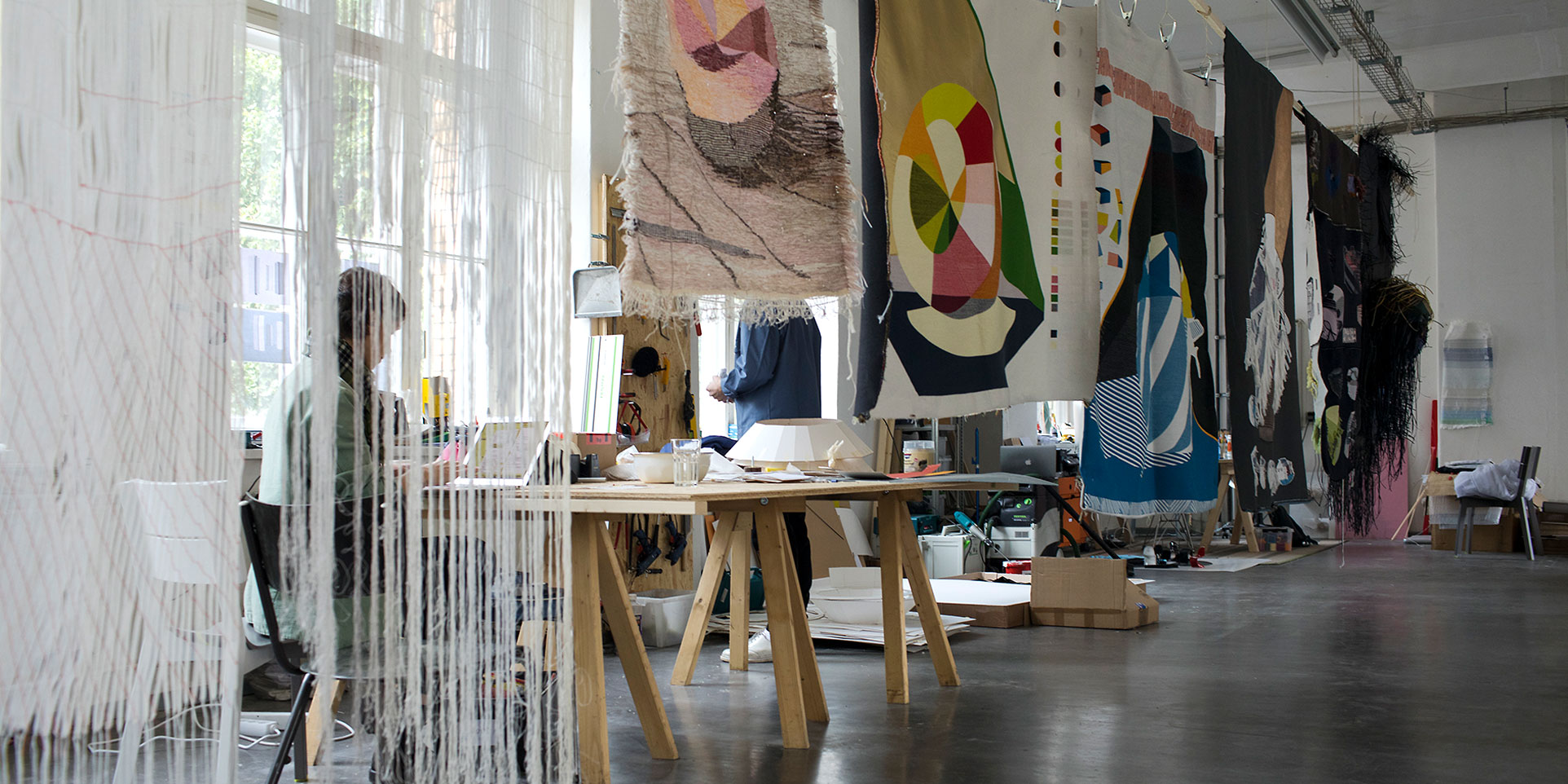
The ‘Evening’ section is a striking exploration of black, a focus of Jongerius’s research for two decades. Rejecting the industrial use of carbon to create black, Hella Jongerius reminds us that there are over ten alternative ways to create darker hues by optically mixing a limited palette of yarns, textures and materials.
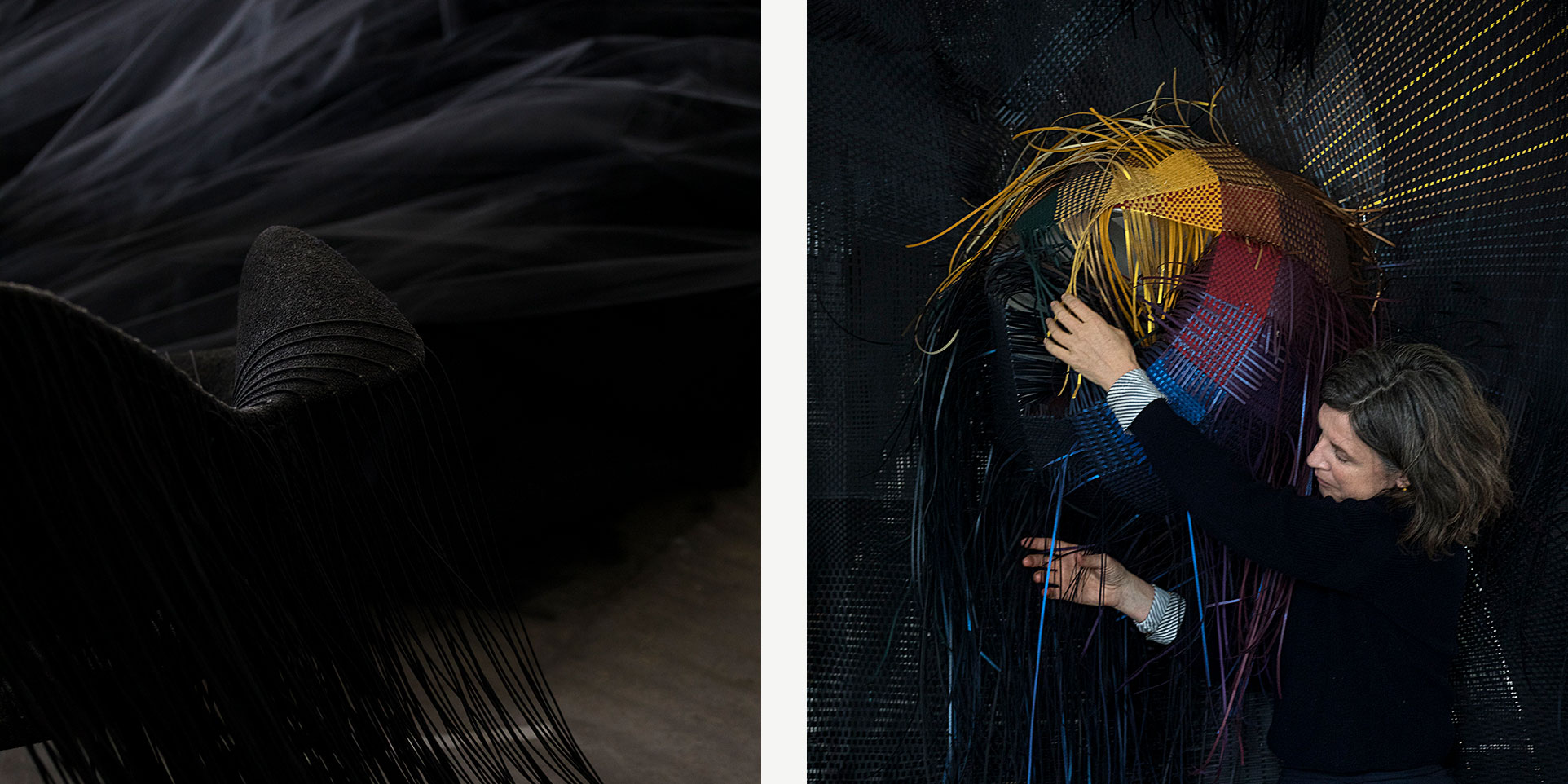
Towards the end of the exhibition, Jongerius presents her Colour Vases a series of 100 unique works from 2010 as part of her studio’s research into minerals and oxides, no longer industrially used as a source of pigmentation due to their instability.
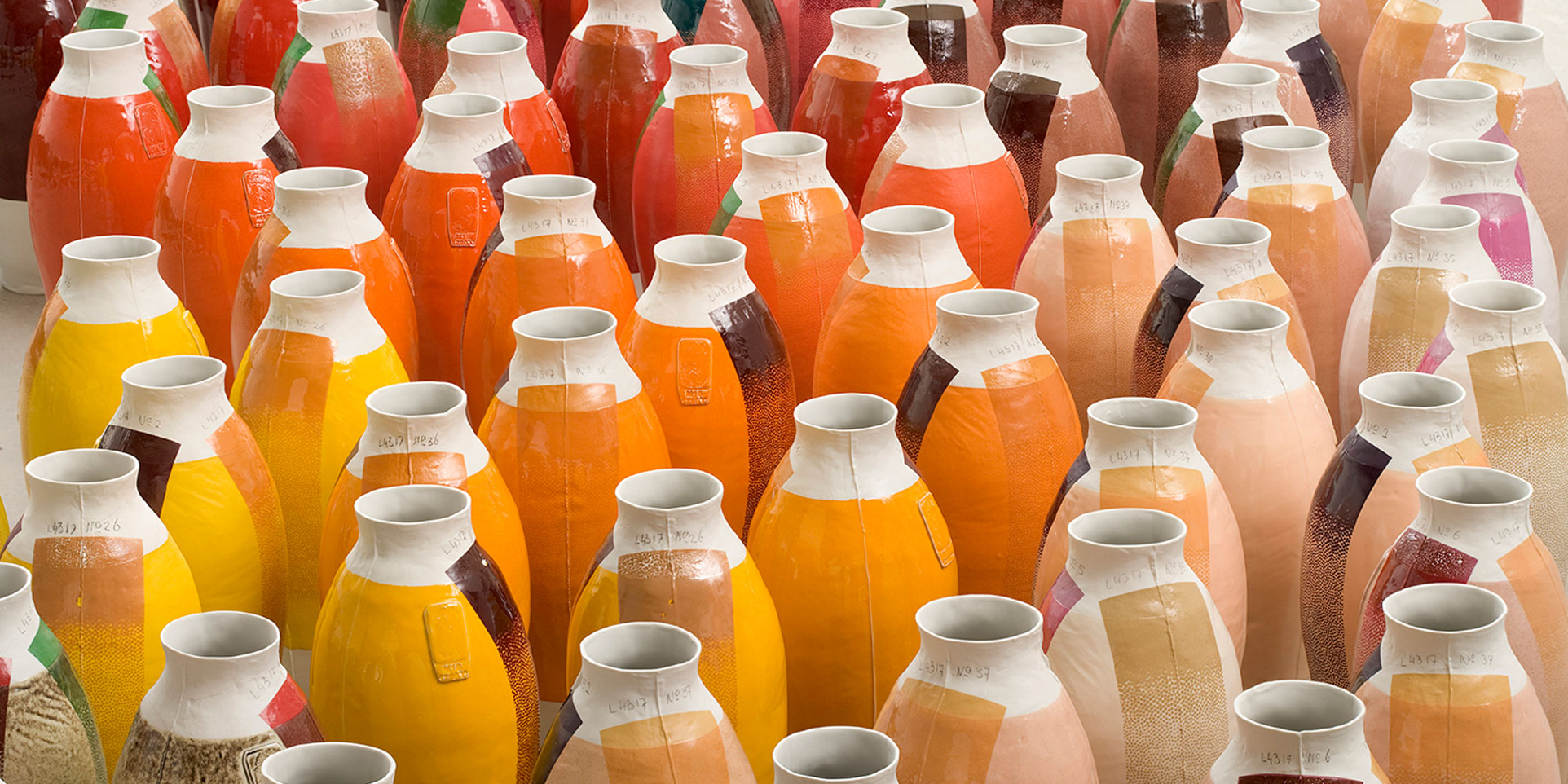
The vases capture perfectly Jongerius’s plea for colours to play a living role. Jongerius argues that industrial fixing and standardized colour have narrowed our experiences of colour and its cultural meanings.
Breathing Colour by Hella Jongerius brilliantly explores how we relate to colour in a more intimate and personal way. The exhibition is open at the Design Museum, London until 24th September 2017. For more information, or to book tickets, follow the link here. -
Yanmi Lui, Winner of the Winterson Prize 2017
Yanmi Lui, Winner of the Winterson Prize 2017
Yanmi Lui was announced as the winner of the 2017 Winterson Prize for the Best Use of Pearls at Central Saint Martins, London last night, where eclectic degree collections from jewellery's future designers went on display.
The influential arts institute’s annual graduate show saw students presenting original pearl pieces, created with advice and support from Winterson Director Andrew Fraser and Creative Director Alice Cicolini.

Yanmi Lui was named this year’s winner of the Winterson Pearl prize for her collection ‘Modern Self-defence Armour & Weaponry’, a playful set of self-defense weaponry that drew inspiration from bio-mimicry design and an interest in martial arts.
Each year the prize celebrates an appreciation and understanding of the qualities of the pearl. With such an original and diverse group of work this year, Yanmi was an excellent winner.
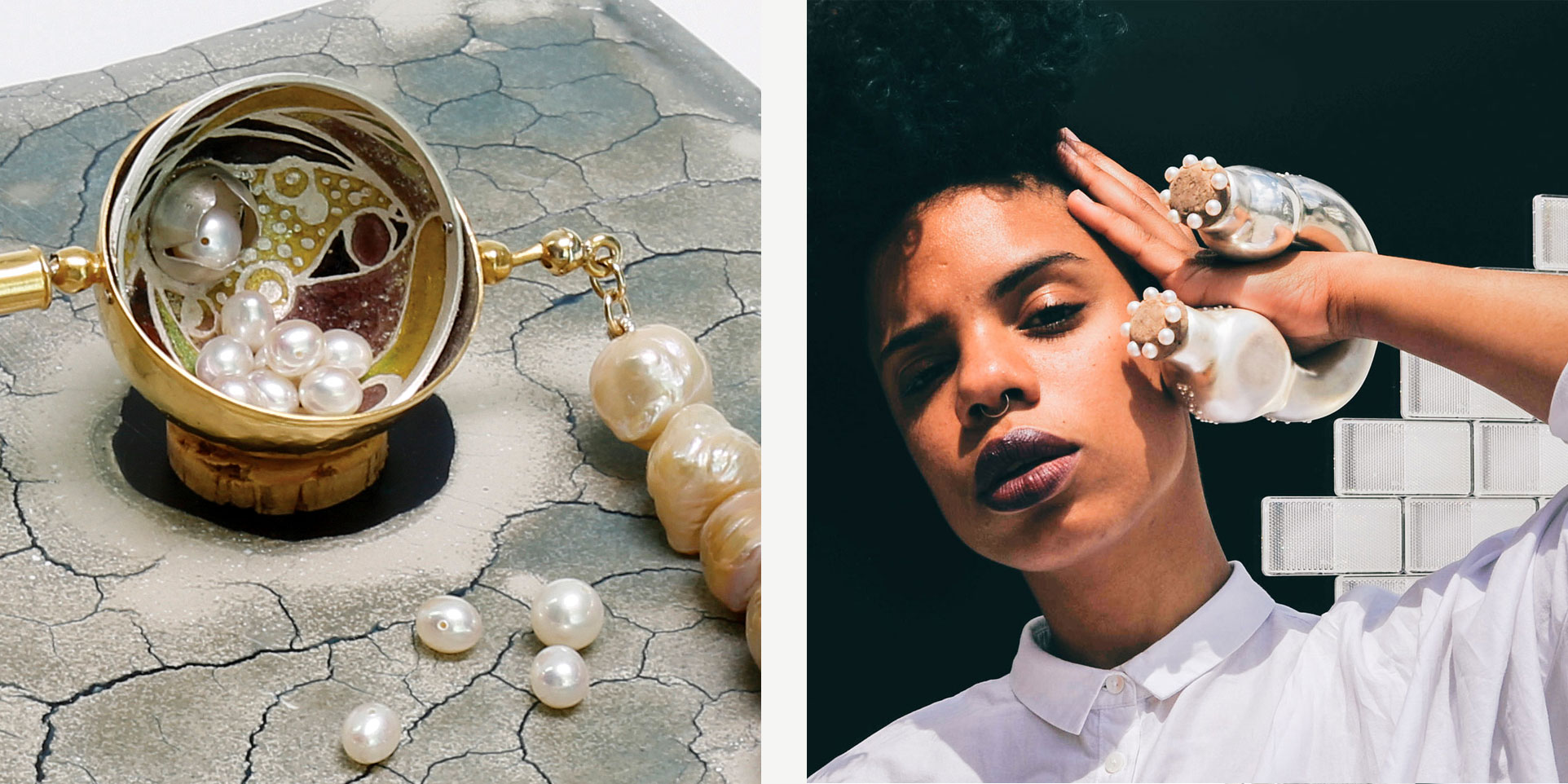
Image 1: Pearl dispenser necklace
Image 2: Bottle cuff
Yanmi described her collection to us: “My collection was inspired by the natural defense systems of animals and plants. I was already interested in the culture of martial arts and its relevance in today's modern society. I tried to mimic organic colours, functions and textures from insects and spiders in my work. The delicate and iridescent qualities of the pearl provided a perfect balance to the sharpness of the designs.”

Image: Shield
"As a designer, I continue to question, what outcomes do I want to achieve from the objects I create? What is the relationship, the interaction, between our most precious-valued objects and to wear them so close on our body? Through the process of exploring this unspoken language, I continue to develop a creative vision of what pieces I want to make and share with others. I enjoy using the artistic freedom in jewellery, aligned by functional design. It is always very delightful to see others wear my pieces, embodying it in their style and interacting with them."
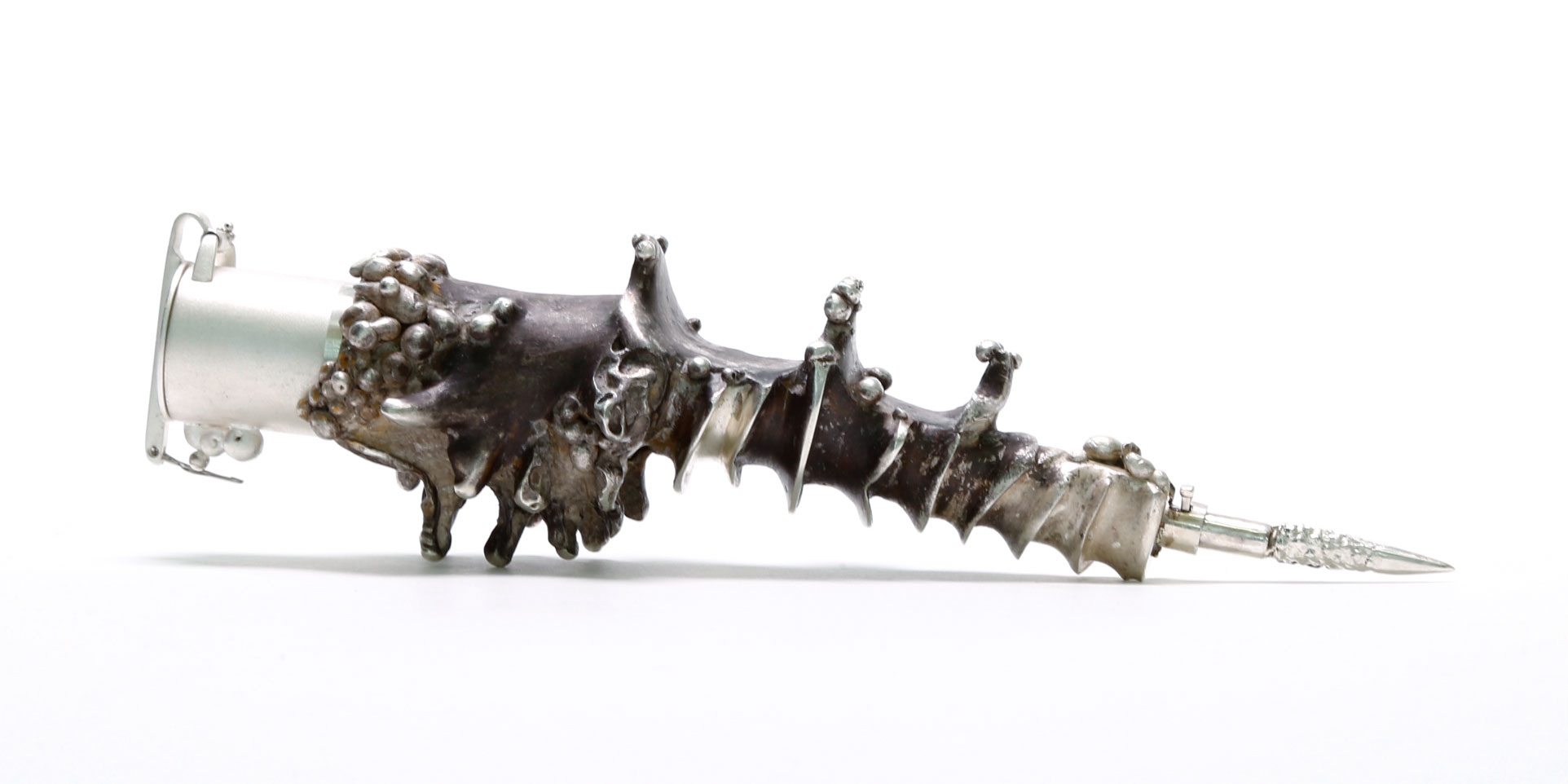
Image: Lipstick shooter
"Through studying my Bachelor degree at Central St. Martins, I learnt the importance of craftsmanship because only by trying, failing and repeating, we gain true understanding as a designer. However, my experience in working with the industry, has also taught me the importance of mass manufacturing being essential to provide for a larger community. I enjoy introducing a craft dimension to functional, usually industrialized objects, for example, the lipstick piece in my graduate collection. My future plan is to gain more understanding of three-dimensional applied technologies on a Masters level, so that I can bridge the gap between the designer and maker."
Pearl blowguns, an eyeball necklace with a dispensing system for pearls, geometric knuckle rings, kevlar shields and an over-sized pearl bottle cuff with Braille lettering formed some of the equipment and hidden details in the collection.
Caroline Broadhead, BA jewellery Design Course Leader commented "Using pearls as a weapon for self-defense is a cunning idea. Yanmi’s collection of jewellery and objects is imaginative and inventive."
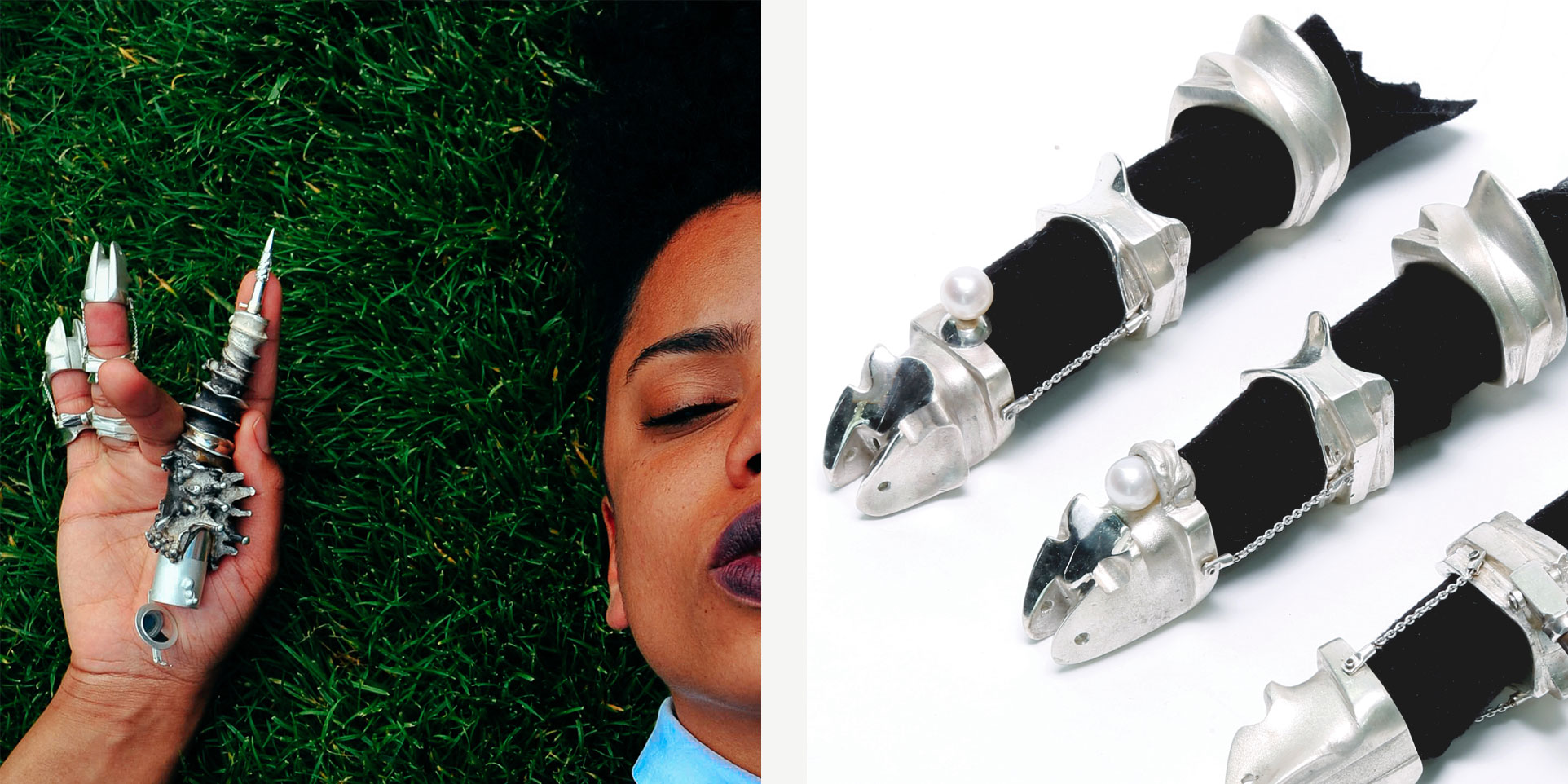
Image 1: Knuckle rings and Lipstick shooter
Image 2: Utility rings
Commenting on the award, Winterson's Creative Director Alice Cicolini said "We were impressed with the way that Yanmi made a clear conceptual connection between the origins of the pearl and her sources of inspiration. It is thought that natural pearls are created by a mollusc as a form of protection, a concept that Yanmi placed at the core of her self-defence collection. The pearl necklace is one of the most enduring luxury jewellery pieces; Yanmi plays with this symbolism, creating a fanciful piece where the pearls represent a source of empowerment as well as adornment."
An original and very well deserved winner for this year's prize, congratulations Yanmi!
Read more about Yanmi Lui and the other CSM designers' work here. -
Winterson Prize 2017: Meet The Designers Part II
Winterson Prize 2017: Meet The Designers Part II
Each year we work with the student jewellery designers at Central Saint Martins in London, giving them an opportunity to experience designing with pearls for their final year collections.
We will be awarding the Winterson Prize 2017 to one of the students for ‘The Best Use of Pearls’ at the CSM Jewellery Awards Evening on 22nd June.
The BA Jewellery graduate collections are exhibited at CSM and open to the public from June 21st - 25th.
Here we feature the final part in a series of short interviews with designers from the CSM Jewellery 2017 show, including in this article - Maria Mungsommai, Ruhong Chen, Xiaoyu (Coco) Guan, Xindi Nie, Yanmi Lui and Yingping Shen.
Read about the other designers in Part I of this series and the winner of this year's prize.
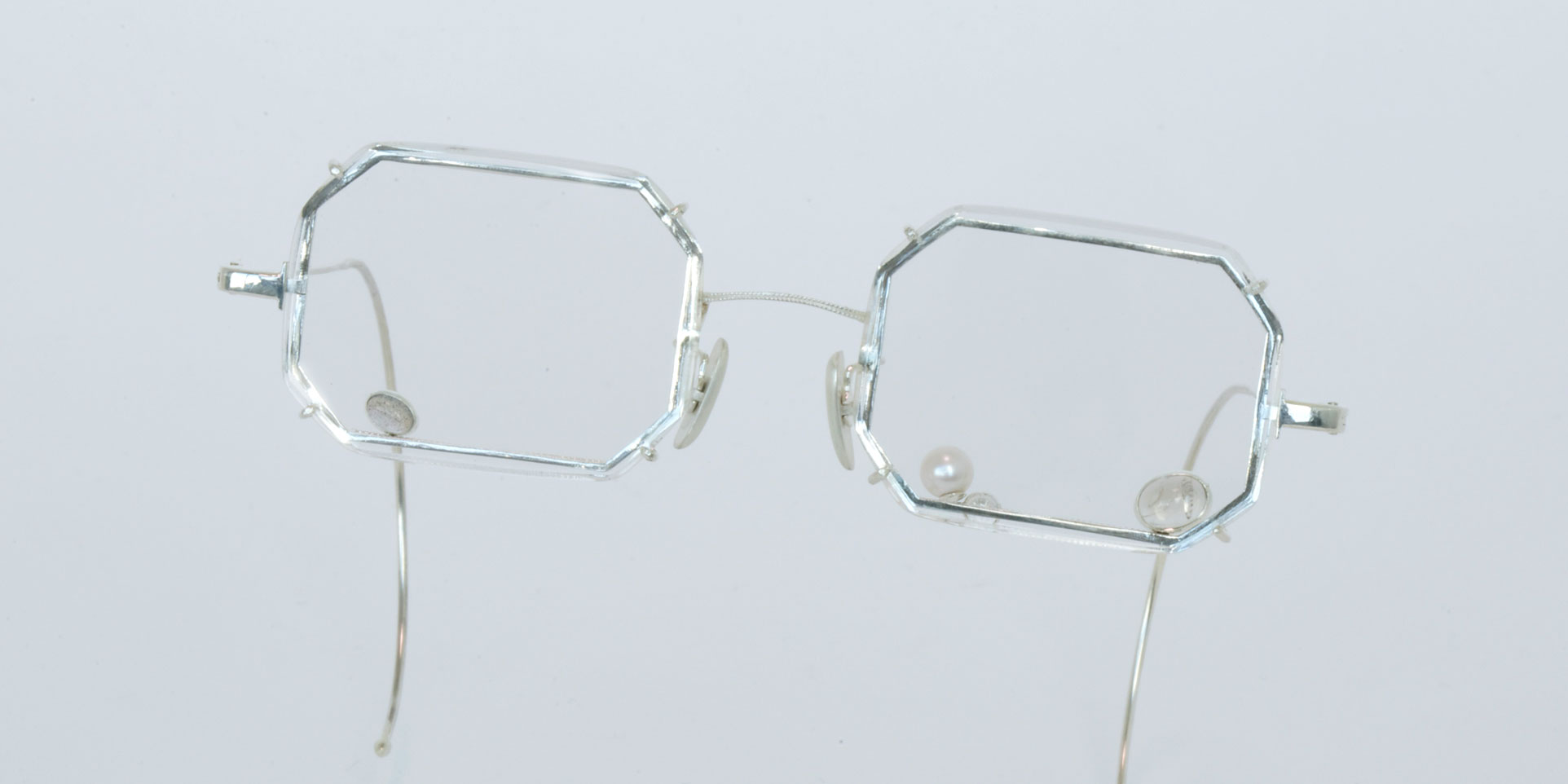
Maria Mungsommai
Tell us a little bit about yourself.
I'm from Thailand and I have lived in the UK for 7 years so far. I came from an academic background and London gifted me with the love for art. Growing up in two vibrant places, I have always been inspired by the eclecticism of both cities and the subject of psychology. Jewellery, for me, is very special. It's magical how such small objects can mean so much.
What was the inspiration for the 'Rose Glass' collection?
It started from a stroll down the jewellery bridge in Ponte Vecchio, watching people looking at fine jewellery window display and asking what is jewellery to them. When looking at fine jewellery such as an engagement ring, it's like there is an instant rose-tinted glass filter. Rose glass is about the romantic desire for fine jewellery. Seeing them and wanting them. Taking inspiration from window displays, for instance, the frame, the glass and the jewellery stand themselves, looking at how jewellery are presented. I wanted to create that romance of seeing jewellery placed behind a glass.
What do you find inspiring about pearls?
Pearls are really romantic in a sentimental way. For me pearls portray a true nuance of romance. Fragile, subtle, a beautiful imperfection. The lustre sort of resembles human skin as well. There's a softness to a pearl that can't be seen in other gemstones.
What have you discovered about working with pearls?
Every single one of them is unique. The dimples and colour differences in each one of them I find very beautiful. Handling them makes you feel instantly more elegant as well (hahaha).
Which designer or artist do you most admire?
There's so many! But if I have to choose I'd say I love the work of Louise Bourgeois and Raf Simons.
Who could you imagine wearing your jewellery?
Hmm.. I think they'll look good on Mia Goth.
What is it that makes a piece of jewellery a design classic?
Can I say whenever there's a pearl in the design? Haha. Well, I think a design is classic when there's some sense of subtlety in it.
What’s next for you after CSM?
I'm planning to do an MA in art business at Sotheby's.
Ruhong Chen
Tell us a little bit about yourself.
I have a passion in art & design and have known that I will work within these area since I was a child. In high school, I studied for two years an A-level in Product design, photography and fine art. Then I studied foundation in CSM and luckily got into BA jewellery. Last year I meet Jewellery Master Catherine Mannheim and studied with her for one month.
What was the inspiration for the 'Ornaments and Pearls' collection?
My collection was started by the idea of conveying a moment of pause and the peacefulness within. Inspired by Edmund de Waal’s project with the same title 'White' (2015- 2016), my research started by looking at the quality of the colour white. I perceive white as being silent, a very powerful quality. And that is why I make all my collection mostly in a silver white finish.
My design has been playing with second-hand ornaments for example; little toys, house decorative adornments, as well as something I personally owned. Ornaments I gathered from second hand market are sentimental objects, carrying the element of memories. By taking away the color, reworking from the form of those ornaments, I have been thinking how memories and white color can both deliever a new perspective to perceive the present world and what was in the past.
Inspired by the Maisie Broadhead art installation ‘pearls’, I like to use the forms of pearl strands in my design so that they appear to have airiness and movement. Initially the use of pearls wasn’t the main focus. However soon my first piece was made, which is a sleeping kitten playing with a pearl necklace. I think it conceptually challenges the traditional use of pearl jewellery. The pearl necklace in history, as seen in most classical paintings, often stands for decorum, hierarchy status and luxury. Here the pearls are being disrupted by the kitten’s sense of playfulness. The sense of subversiveness is strong, and so I adjusted my design direction to focus on the use of pearls, especially pearl strands. Considering how it can interact with the ornament, and how it brings out the preciousness of silver.
What do you find inspiring about pearls?
Unlike a diamond, which often dazzling and sharp, the beauty of pearls is more subtle, natural and refreshing. I am inspired by its varied luster and colour, especially as it appears like a rainbow, and the pearl’s different shapes are also fascinating. Using pearls with precious metal, it can really transform the metal, bringing a new liveliness.
What have you discovered about working with pearls?
I discovered that there are lots of ways to use pearls, It could simply be attached by gluing, or it can be applied by stone setting techniques, stringing, wiring, beading, crocheting and so on. More complex techniques to use pearls doesn’t make the work more valuable, the value come from how the use of pearl links to the context of the jewellery and how it makes a story as a whole. The visual quality of purity from pearls is also my focus when I work with pearls.
Which designer or artist do you most admire?
For jewellery design, I admire Otto Kunzli with his minimalism and the use of a witty metaphor in his jewellery, for example the work ‘Gold makes you blind bracelet‘. The gold is concealed in black rubber, the shape forming a gold diamond ring that most people would have.
In fine art area, I like Henri Matisse for his art of strongly expressive human body forms, for example ‘the dance’, as well as his paper cut works that are energetic, and have a curiosity for wondering.
Who could you imagine wearing your jewellery?
Middle aged women who have studied or work in fashion or an art associated area. Having a sense of humor, passionate about life, appreciates the beauty of simplicity and enjoys wearing pearls.
What is it that makes a piece of jewellery a design classic?
Knowing the aim of the jewellery, to be open and true to it throughout the design. Inspiration is important but there are lots of refinements needed. A design classic jewellery arising from new ideas should have a personality like people, which gives an intimacy between the wearer and itself. Continuing traditional techniques and to innovate are also important.
What’s next for you after CSM?
Study a Master degree jewellery in the UK, also start up my own jewellery business.
View more of Ruhong's work here.
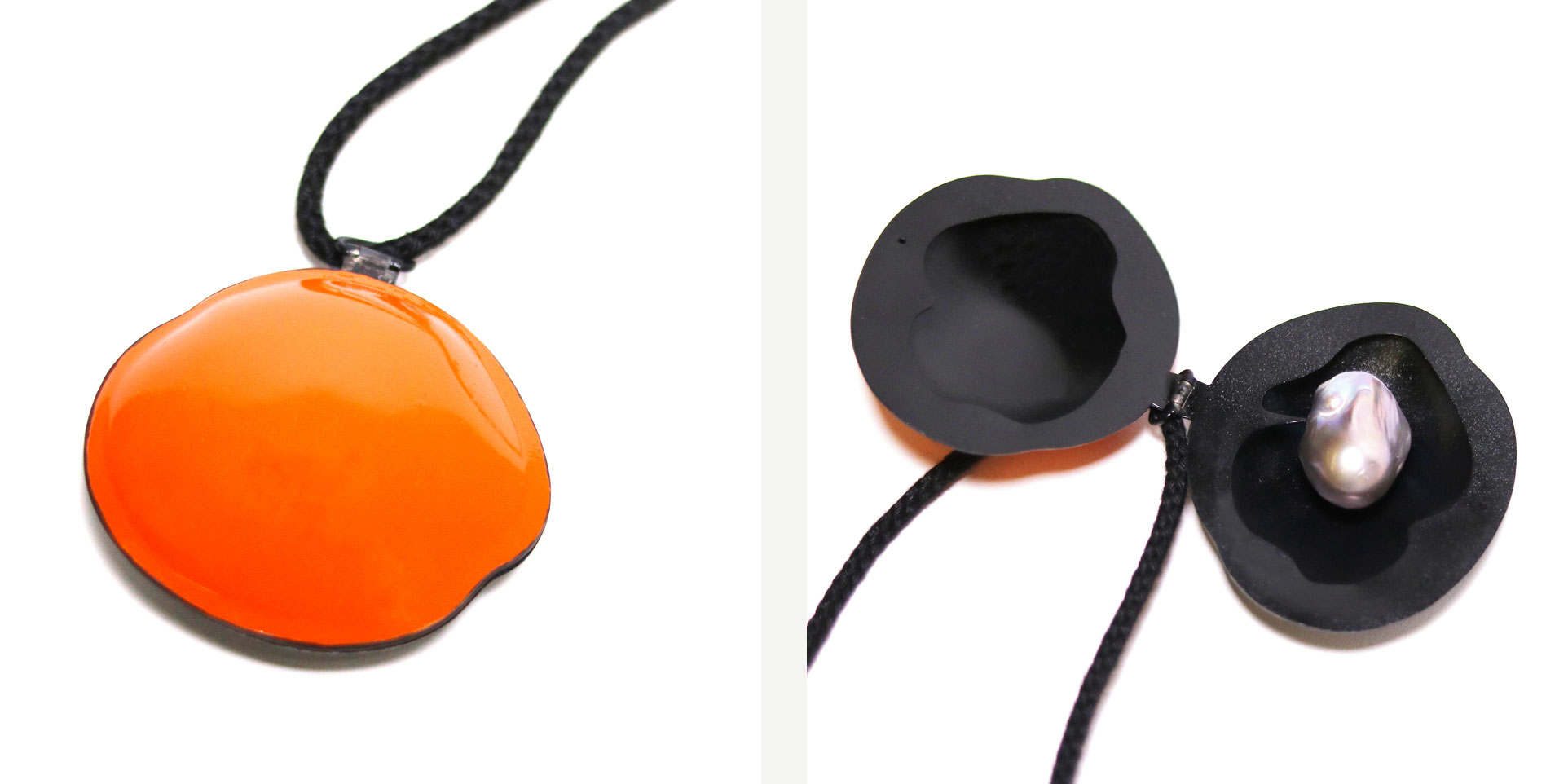
Xiaoyu (Coco) Guan
Tell us a little bit about yourself.
My name’s Coco. I’m a Chinese girl, staying in London for four years since my foundation course. I learnt Graphic & Communication Design three years in another University in China before, and then I came to CSM to study Jewellery design, which is my favourite major.
What was the inspiration for the 'Beans & Pods' collection?
The theme of this project is about beans and pods. Beans have long been interesting to me as a form and as a metaphor for positive, value, nourishment and potential. I’ve also been intrigued by how many different scales, shapes, textures and colors they come in. Due to the fact that we often eat beans in our daily life, I collected some different types of beans, such as mung beans, red beans and pea, thus, I want to use beans as a project starting point.
What do you find inspiring about pearls?
I’m interested in the shape of pearls. The surface of the pearl could be smooth and free of marks while the overall shape could be round, oval, pear-shaped, or even misshapen. For this project, I chose to use freshwater pearls, because I like the natural shapes. I feel they’re really like the real beans in the natural.
What have you discovered about working with pearls?
I feel quite good when I worked with them. It’s interesting to stitch pearls to metal.
Which designer or artist do you most admire?
My favorite jewellery designer is Peter Chang, who produces mainly jewellery in the form of bangles/bracelets and brooches. He uses a variety of methods to achieve the bright colors and bizarre shapes. The colors red and yellow were especially popular, and form a color combination often seen in Chang's work.
From his work, I started to understand and explore how colors work together, the responses color provokes in a viewer, and what color symbolizes in nature. For instance, for this project, I made my own color palette and started to overlay many layers of colors on the bean’s surface, meanwhile, I still keep the single color for some of them.
Who could you imagine wearing your jewellery?
I think most of female will love my woks, because of the colors. For the whole collections, I used a lot of bright color, as the aim was to bring people limitless happiness when they try or see my works. And it’s also the main meaning of my works. I hope people can feel happy and get lucky when they wear them.
What is it that makes a piece of jewellery a design classic?
I think it’s the meaning and story behind that piece. The appearance of a jewellery, the color, or the shape should be attractive for people to stop by, but when you understand the story behind it or what it really means, you will appreciate it forever.
What’s next for you after CSM?
I already got a MA Jewellery design offer from CSM. Therefore, I’ll still stay London to finish the course and learn more things.

Xindi Nie
Tell us a little bit about yourself.
I’m 22 years old and interested in installation art pieces.
What was the inspiration for the 'Incidental Poetry' collection?
The integration of irrelevant objects fascinates me greatly with the sense of surrealism that is created by the process of clashing and combining. Such events occur accidentally all the time in our day to day lives, objects being turned into another form of existence which also serves an entirely different purpose.
On the other hand, does jewellery possess an ability to influence or even entirely replace the being of ordinary objects in a traditional manner?
What do you find inspiring about pearls?
Pearls are my favorite material, they are unique among other jewellery materials, such as metals and stones, as they are relatively softer and contains gentle sheen. Pearls play a essential role in my collection.
What have you discovered about working with pearls?
The techniques of using pearls is a different category compared with other jewellery techniques that I learned before. I was very impressed with the way of stringing pearls, and french wire finishing techniques.
Which designer or artist do you most admire?
Artist: Giorgio Morandi, Roni Horn, Lois Weinberger, Mark Manders
Designers: Reka Lorincz, Marc Monzo, Bernhard Schobinger, Hands Stofer
Who could you imagine wearing your jewellery?
I would like to think of my works as art pieces, which is a homage for Giorgio Morandi. His paintings inspired me a lot.
What is it that makes a piece of jewellery a design classic?
The concept behind the design makes a piece of jewellery meaningful and classic.
What’s next for you after CSM?
I’m applying for an MA course at this moment.
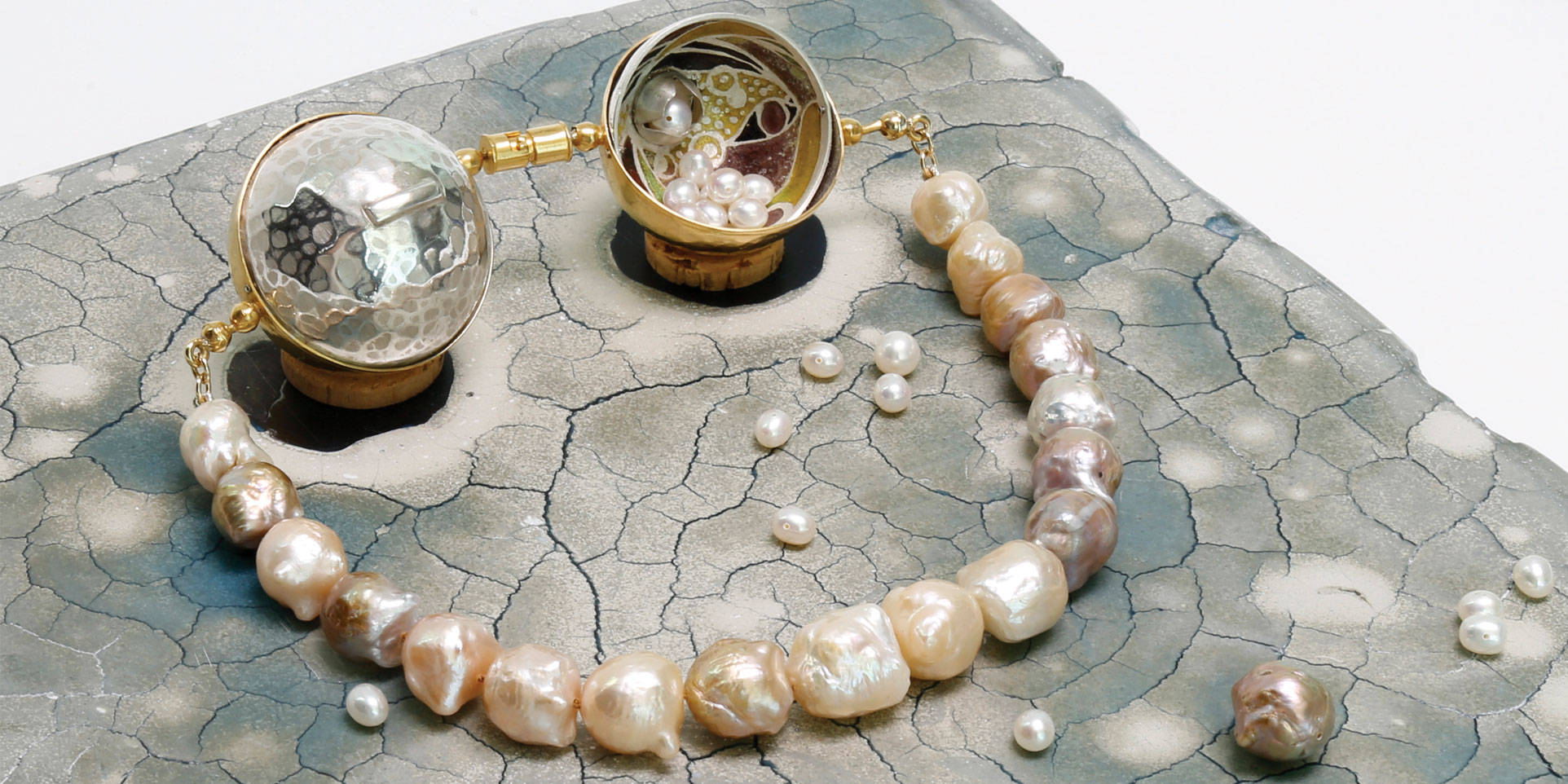
Yanmi Lui
Tell us a little bit about yourself.
I am always curious about things and I let my mind wander when I’m travelling.
What was the inspiration for the 'Modern Self-defence Armour & Weaponry' collection?
Initially, I am inspired by the culture of different types of martial arts that do and do not use weapons in self-defence, because this form of fighting is integral to many security-related professions e.g. hostess, guards, military training. I enjoyed researching the developmental process of creating a weapon and analysing its changing values in the progress of a modernizing society.
Secondly, Biomimicry: I find the natural design systems in organisms fascinating, especially at a very small scale in insect defence mechanisms.
What do you find inspiring about pearls?
Most defence mechanisms have sharp, warning shapes and textures. I chose to use the iridescent and ‘soft’ qualities of pearls as embellishments to counteract with ‘aggressive’ forms. The way that pearls are formed is a type of natural defence mechanism – molluscs use layers of iridescent nacre to wrap around the intruder, forming a pearl.
What have you discovered about working with pearls?
They are very versatile to work with.
Which designer or artist do you most admire?
Jackson Pollock (Abstract Artist)
Who could you imagine wearing your jewellery?
‘Cheeky’, playful people who like hidden surprises.
What is it that makes a piece of jewellery a design classic?
Memorable, stand-out elements in a piece of jewellery; something that is understood by a big audience. A technique that is shared and practiced by many people i.e. a class strand of pearl necklace is made from specific string knotting techniques.
What’s next for you after CSM?
Work to learn more about the industry hands-on, or if because of visa limitations, I am deciding to learn more about functioning systems on a Masters level.
View more of Yanmi's work here.
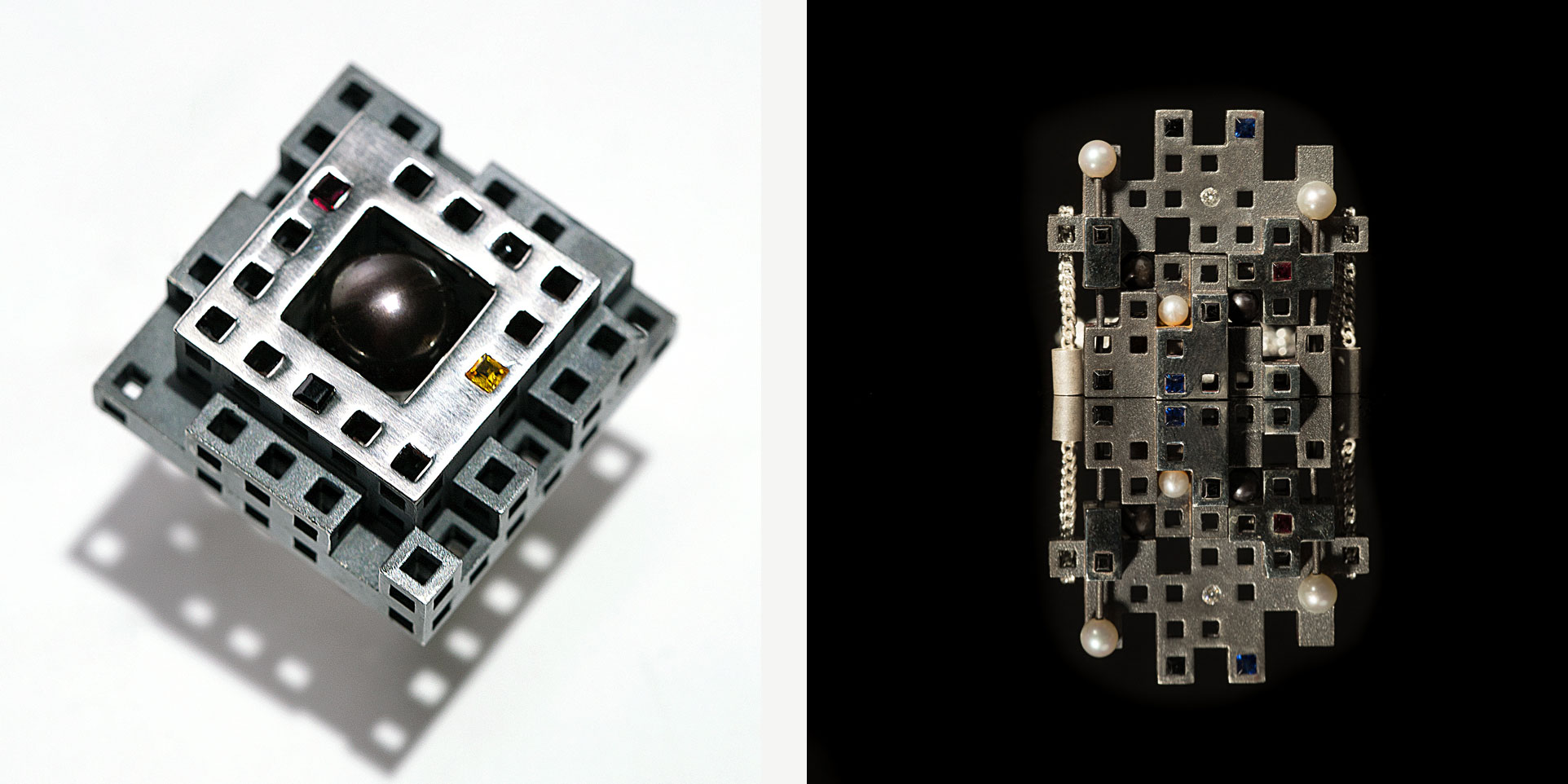
Yingping Shen
Tell us a little bit about yourself.
I am from China, I studied jewellery identification in China.
I like to combine other design elements into my jewellery, such as fashion and architecture. I think I don’t want to be an artist, I want to be a good jewellery designer in the future, making jewellery between fine and contemporary.
What was the inspiration for the 'Breathing' collection?
I was inspired by the cityscape. I saw the busy buildings in the city, and endlessly windows on the buildings, so many people working inside day by day. I wanted to express a fervent desire to escape from the city’s asphyxiating environment. I used different colours (black and white), different shapes, and some moving parts on the jewellery to express people's need to breathe. Pearls and precious stones express the people (precious) in the buildings.
What do you find inspiring about pearls?
This is my first time that I have used pearls in my jewellery.
I think jewellery with a pearl, and without a pearl are very different, with a pearl that can make a jewellery more feminine.
I think it is very good for my collection, because my collection is based on so many cubes and straight lines, it looks very masculine, but the use of round pearls can change this.
What have you discovered about working with pearls?
I bought some half drill pearls to work, and when I put pearls into the pins, around the holes, the pearls are very easy to break.
Which designer or artist do you most admire?
I like Renzo Piano, the architecture designer.
Who could you imagine wearing your jewellery?
I want to make some jewellery for everyone, unisex, and all ages.
What is it that makes a piece of jewellery a design classic?
I think contemporary jewellery needs a very good story or idea. And fine jewelry needs a good design and good material.
What’s next for you after CSM?
Find a job and make my own brand. -
Winterson Prize 2017: Meet The Designers Part I
Winterson Prize 2017: Meet The Designers Part I
Each year we work with the student jewellery designers at Central Saint Martins in London, giving them an opportunity to experience designing with pearls for their final year collections.
We will be awarding the Winterson Prize 2017 to one of the students for ‘The Best Use of Pearls’ at the CSM Jewellery Awards Evening on 22nd June.
The BA Jewellery graduate collections are exhibited at CSM and open to the public from June 21st - 25th.
Here we feature the first part in a series of short interviews with designers from the CSM Jewellery 2017 show, including in this article - Annie Kim, Biwa Pik Wa Wong, Ely Cao, Georgina Hopkin, Holly O'Hanlon and Jieun Kim.
Read about the other designers in Part II of this series and the winner of this year's prize.
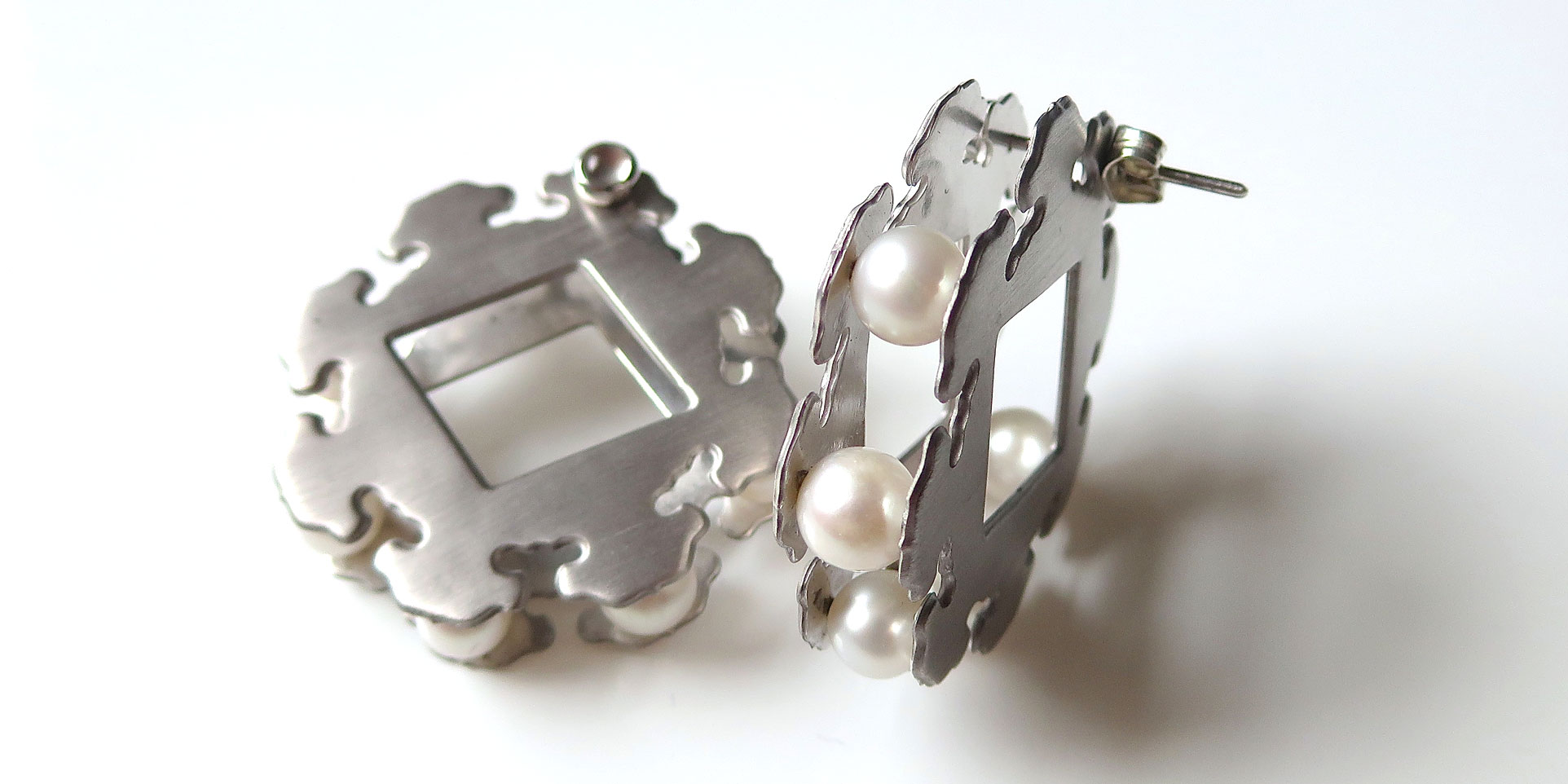
Annie Kim
Tell us a little bit about yourself.
My name is Annie and I was originally born in Korea, then at the age of 13, I decided to study abroad in Manila, Philippines by myself to learn English. As I always had my passion towards Arts, I moved to London for high school and aimed to apply for Central Saint Martins where I could open my vision towards Jewellery Design. I did my foundation course in CSM and continued my study for BA jewellery design at the same college.
What was the inspiration for the 'Re:Heritage' collection?
This collection encapsulates my personal awareness of Korean heritage, focusing on traditional patterns drawn from architectural structures and details of temple facades.
As a Korean person, who left my home country at an early age, I want to reconnect with my cultural roots and so I chose to work with details of my heritage as inspiration for my BA jewellery collection.
In my design research I focus on the graphic surface patterns and motifs found on ceramic tiles and also wooden panels in temples. I believe these to be culturally meaningful and too important to be forgotten and seen as “old” or “passé”. They represent Korean heritage, and so carry both visual and cultural value.
Inspired by the architectural constructions of the temples, each earring design is layered and at times articulated, in its construction. I was amazed how each space is filled out with such a fine detail, while also considering very much vivid colours.
What do you find inspiring about pearls?
It is the first time I have used pearls within my work and I think this material has a strength and a characteristic representing elegance and purity. The colour on the surface not only has one dominant colour, it glows and shines in different angles. I was inspired by how adding a single pearl with my pieces changes the mood. Not only did it turn my piece from 2 dimensional to 3 dimensional, it allowed me to add another texture and colour that matches well with any kind of metal or precious stones.
What have you discovered about working with pearls?
I have discovered that pearls do have wider possibilities of transforming, while they are also very fragile. For one of my pieces, I had to enlarge a hole size, up to 2mm with a 7mm pearl size, which was a big pressure given to the pearls. However, the pearls were stronger than I believed and also had so many different ways of connecting them together involving other materials. The simplest way of keeping up the pearls was able to show their best purity.
Which designer or artist do you most admire?
Throughout my researching of artists, I have admired the work of Susan Collis. She uses mother of pearl as one of her materials and I was intrigued by the way she displays the material with daily marks on natural objects. It was a simple display that showed the characteristics of the mother of pearl that matched really well with our everyday objects.
Who could you imagine wearing your jewellery?
Not only this collection does this endorse Koreans, I wish to encourage others to wear it also. My main theme and inspiration comes from Korean heritage, however, I wanted to create a collection that others can easily adopt while wishing them to be attracted to wear my jewellery as well. Allowing them to get comfortable with my country’s craftsmanship was the aim and the invitation.
What is it that makes a piece of jewellery a design classic?
I believe speaking out and directly showing what your inspiration is; in your design the main key is to be classic. Once a designer has a theme or meaning, I think it is important they show that straightforward towards the shape or pattern of the piece. Pieces that includes more meaning and asks the audience to think through might appeal more personal awareness of that particular designer.
Also, I think using materials that are commonly known to be classic or simple/pure should take up a big role. Textures and colours are also important while designing.
What’s next for you after CSM?
I wish to learn wider skills and understanding in jewellery world. I think there is so much more I need to discover and learn from designers and artists who are much experienced than me and that one day I will get a chance for me in future to teach others about jewellery and arts.
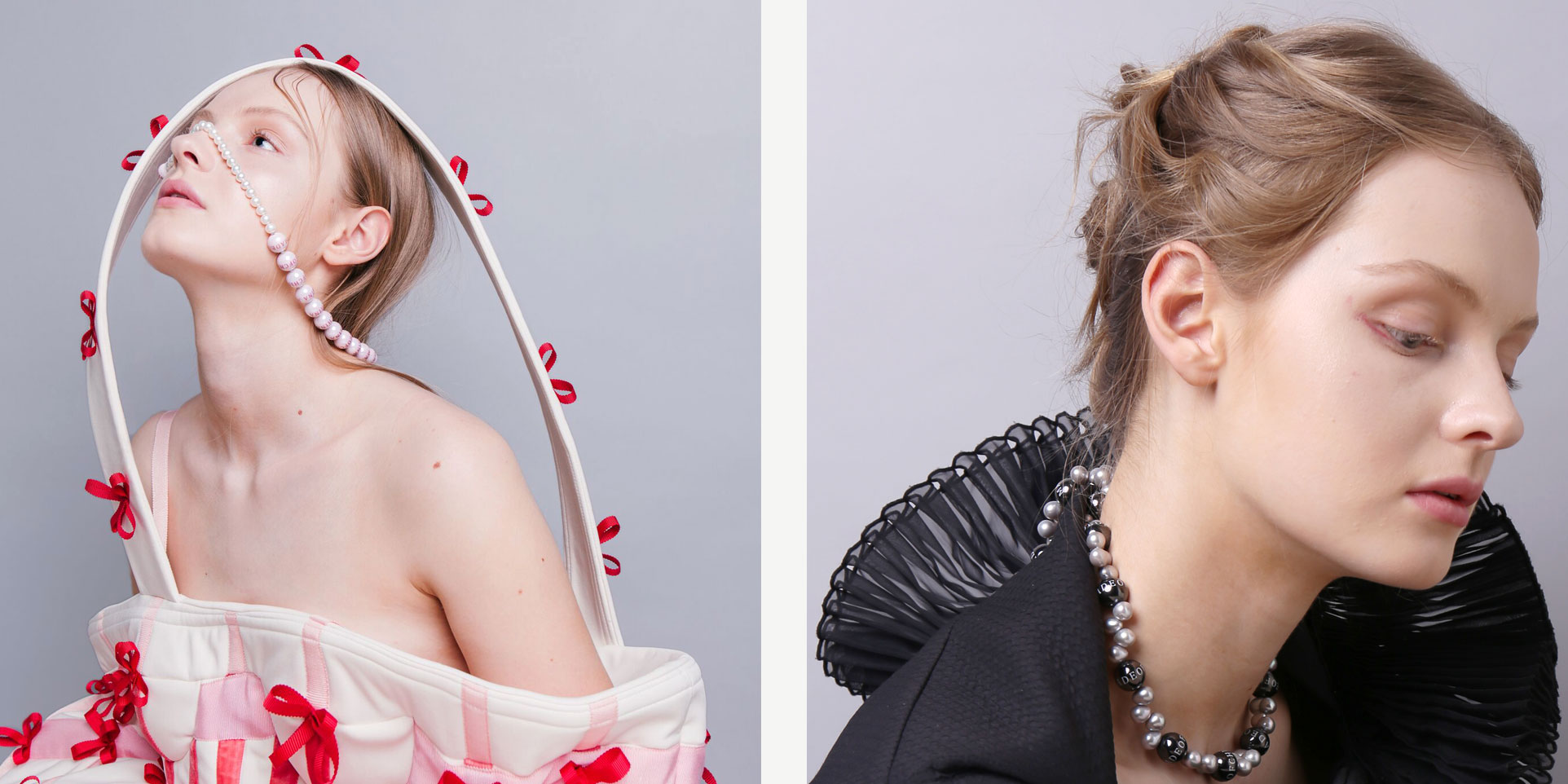
Biwa Pik Wa Wong
Tell us a little bit about yourself.
I am from Hong Kong, China. I like making things that really reflect myself and relate to myself. Combining traditional and comtemporary ideas together, to consider design conceptally and visually.
What was the inspiration for the 'Made of China' collection?
The title of my collection is ‘Made of China’ as I am using China,the porcelain mostly in this collection.
Porcelain may typically be associated with chinaware, but my Made of China, hopes to break that stereotype. By transforming the material into wearable ornaments, I introduce it as a versatile substance that can be utilised beyond its original purpose and reflects my heritage.
Combining traditional and contemporary techniques, the pieces are crafted from traditional porcelain beads embellished with handwritten texts, high-strength ceramic beads adorned with lithographic decals, and 3D-printed ceramics.
The result is a sleek and minimalistic set of grandes complications personifying Chinese philosopher Zhuangzi’s idea of damei or “great beauty,” the concept of understated elegance that originally inspired the collection. Truly embodying the “less is more” maxim, Made of China is a delicately refreshing alternative to today’s tendency towards excess.
What do you find inspiring about pearls?
As I am using porcelains, challenging the techniques of making porcelains balls,I found a technique in a ceramic company in Jingdezhen which is a ceramic town in China which specialized in making porcelains ball with a pearl finish. The balls are as glittering and translucent as the pearls,so I used real pearls with my porcelain balls design to enhance its luxury.
What have you discovered about working with pearls?
Whilst I have been working with pearls, I discovered that pearls are really easy to work with but also hard to work with. A single pearl is a piece of jewellery that has its own different colour, shape and gloss. Designing with pearls is not easy - how to bring the most out of a pearl and not going too far is what I should consider when I am working with pearls.
Which designer or artist do you most admire?
Dutch painter Johannes Vermeer.
Who could you imagine wearing your jewellery?
A girl with real class.
What is it that makes a piece of jewellery a design classic?
Simple, but heart catching.
What’s next for you after CSM?
Being a jewellery designer.
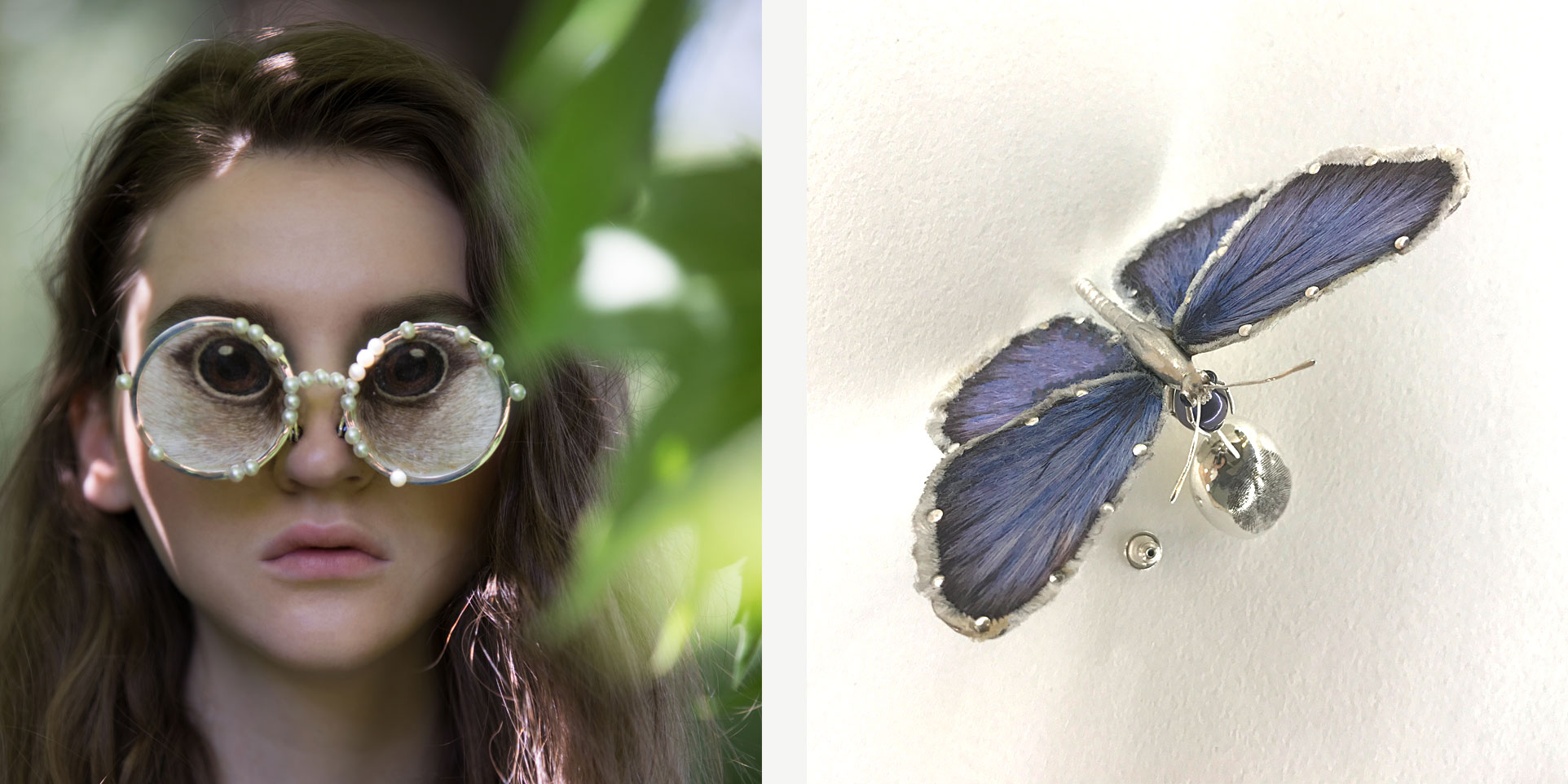
Ely Yili Cao
Tell us a little bit about yourself.
Trained to be an architect, changed mind before my BA to work with smaller scale 3D pieces.
What was the inspiration for this 'Silk Menagerie' collection?
My belief, my cultural background and my aesthetics, as a jeweler, an embroider, an animal-lover and a Chinese.
What do you find inspiring about pearls?
Their unique aura, which is not provocative yet stands for itself.
What have you discovered about working with pearls?
It is a fragile but strong material. With the right amount, colour and shape, it lights up the whole piece.
Which designer or artist do you most admire?
Tadao Ando and Christopher Lemaire, they work in different fields but share a unique sense of satiety, a balance between material (materials if necessary) and empty space.
Who could you imagine wearing your jewellery?
Personally, I don’t wear jewellery as I don’t wanna label myself as a certain type of jeweller, similarly I don’t label my jewellery to certain group of wearers. I will leave the choice to wearers and my pieces.
What is it that makes a piece of jewellery a design classic?
A sense of satiety. Every details tells the same story, yet represents its own reason of existence. The existence and emptiness create harmony.
What’s next for you after CSM?
I was offered two places - one in RCA Jewellery Metal and another in RCA Fashion millinery. I chose millinery to challenge myself as a more versatile designer.
View more of Ely's work here.

Georgina Hopkin
Tell us a little bit about yourself
I am a British jewellery designer and maker. I only create things that excite me and evoke a reaction from people.
What was the inspiration for the 'Organ Cake' collection?
I want to push peoples perception of jewellery, and also investigate the fine line between the grotesque and the sublime. I was inspired by artwork made of intestines and meat, which were presented in a way that didn't make them appear gruesome. I found it interesting how people only have a repulsed reaction once they realise what they're looking at.
What do you find inspiring about pearls?
I love the imperfect shapes that pearls come in. They also acted as a nice counterbalance for my grotesque foam and ceramic pieces. I found it funny to add pearls (a symbol of luxury) onto oozing organ-like objects.
What have you discovered about working with pearls?
It isn’t often that I work with precious stones or materials, so it was a new experience for me. I learnt how delicate they are and how to correctly string them, a technique which I was able to alter to suit my designs.
Which designer or artist do you most admire?
Karl Frisch. His jewellery helped me open my mind to ‘ugly’ settings, and seeing the beauty in the unconventional. Also Grayson Perry has inspired me to just be myself.
Who could you imagine wearing your jewellery?
Someone who likes pink and has a sense of humour.
What is it that makes a piece of jewellery a design classic?
Something that stands out against current design, and it might help if a famous person wears it.
What’s next for you after CSM?
I am an open book right now, I can live and work anywhere. I would like to work in the city, or any city, but also live in the countryside.
View more of Georgina's work here.
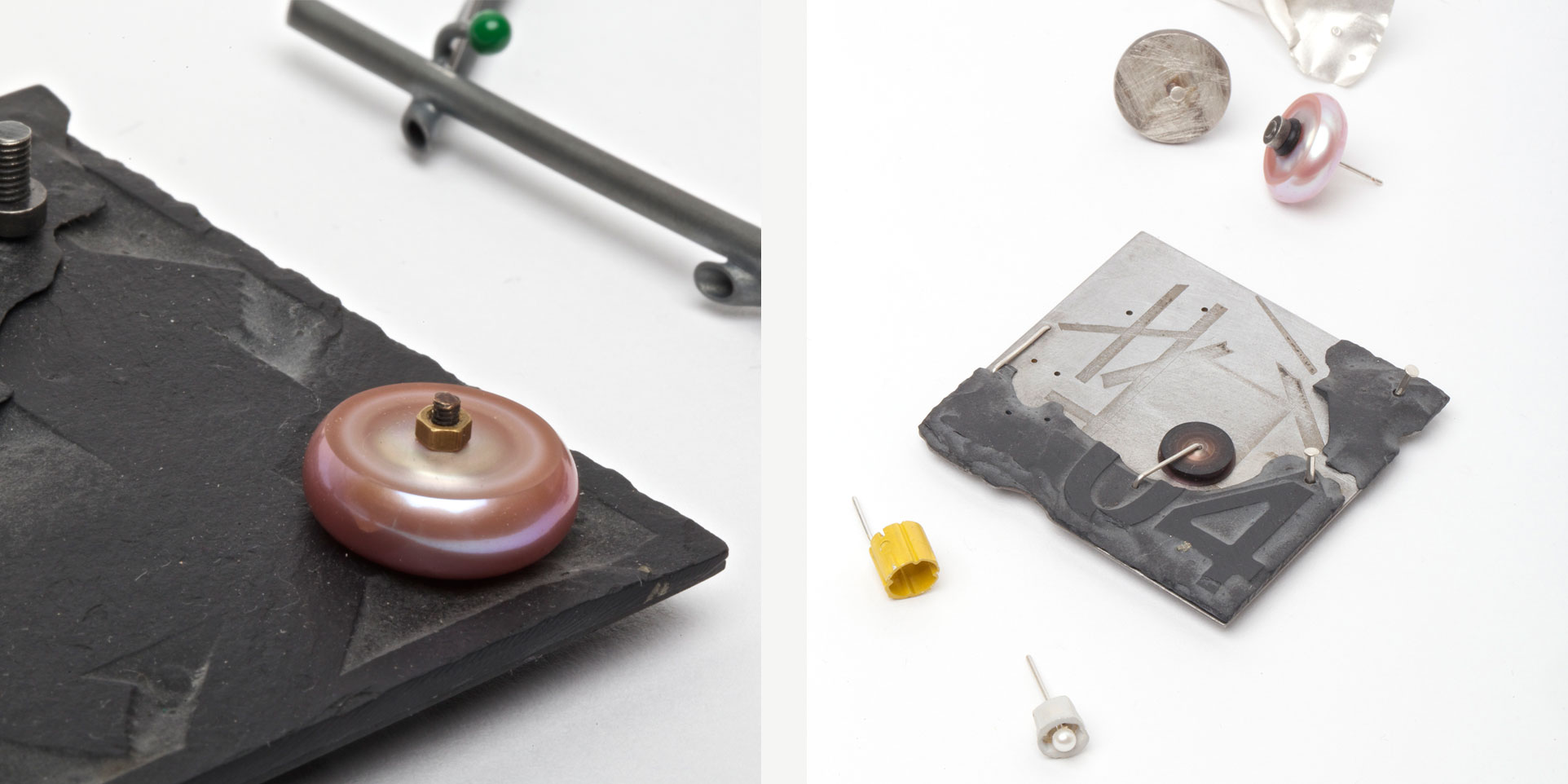
Holly O'Hanlon
Tell us a little bit about yourself.
My name is Holly O’Hanlon and I’m from Galway, Ireland. I’ve been studying BA Jewellery Design in Central St. Martins for the past three years. The way in which people interact with everyday objects, the associations and feelings the familiar can evoke is central to my work. My priority is to draw attention to the overlooked, utilitarian or mundane and, in particular, to the traces and fragments that remain from a practical task.
What was the inspiration for the 'Excess' collection?
My starting point for the collection was exploring different forms of excess. Through using slate as my primary material I aimed to emulate surfaces of walls and signage that change through corrosion or human contact and intervention. In doing this I hoped to show how the absence of an object can be communicated through its former location and the material that previously surrounded it- framing the unseen. The fragility of the slate juxtaposed with the lustrous quality of the pearls really highlighted the versatility of the two natural materials - precious merging with non- precious which executed the concept well.
What do you find inspiring about pearls?
Pearls have such an inherent preciousness that only increases once you begin to work with them. They have such a rich history and I find it interesting to subvert this to a level of utility for example, pearl washers attached to brooches using a silver staple or screw and earring backs that support individually crafted and enamelled silver thumbtacks.
What have you discovered about working with pearls?
To execute my designs , I used a process where I ground each pearl down to emulate the form of a washer- flattening both sides and keeping the finish of the rounded edges intact , the different layers of concentric colours and tones that were revealed were so beautiful and exciting and really added a new dimension to the pearls that previously remained hidden and unseen.
Which designer or artist do you most admire?
Naomi Filmer, the dialogue and balance she creates between her jewellery and the body is so sensitive and equally impactful. She is such a jewellery hybrid and her innovative approach to contemporary jewellery by visualising negative space through her knowledge of materials and processes is something I found really inspiring this year.
Who could you imagine wearing your jewellery?
As my pieces are unisex, I would hope they will appeal to anyone with an appreciation for detail, contrasting surfaces and materials within jewellery which applies a deceptive and playful approach!
What is it that makes a piece of jewellery a design classic?
A piece that utilises an innovative use of craft with a skilled application of techniques in combination with a considered design capability that has a sense of wearability.
What’s next for you after CSM?
As of now, my aim is to continue to develop and improve my knowledge and skills within industry in order to learn from people more experienced than myself. However, I am an open door to any opportunity that would still enable me to do what I love - jewellery!
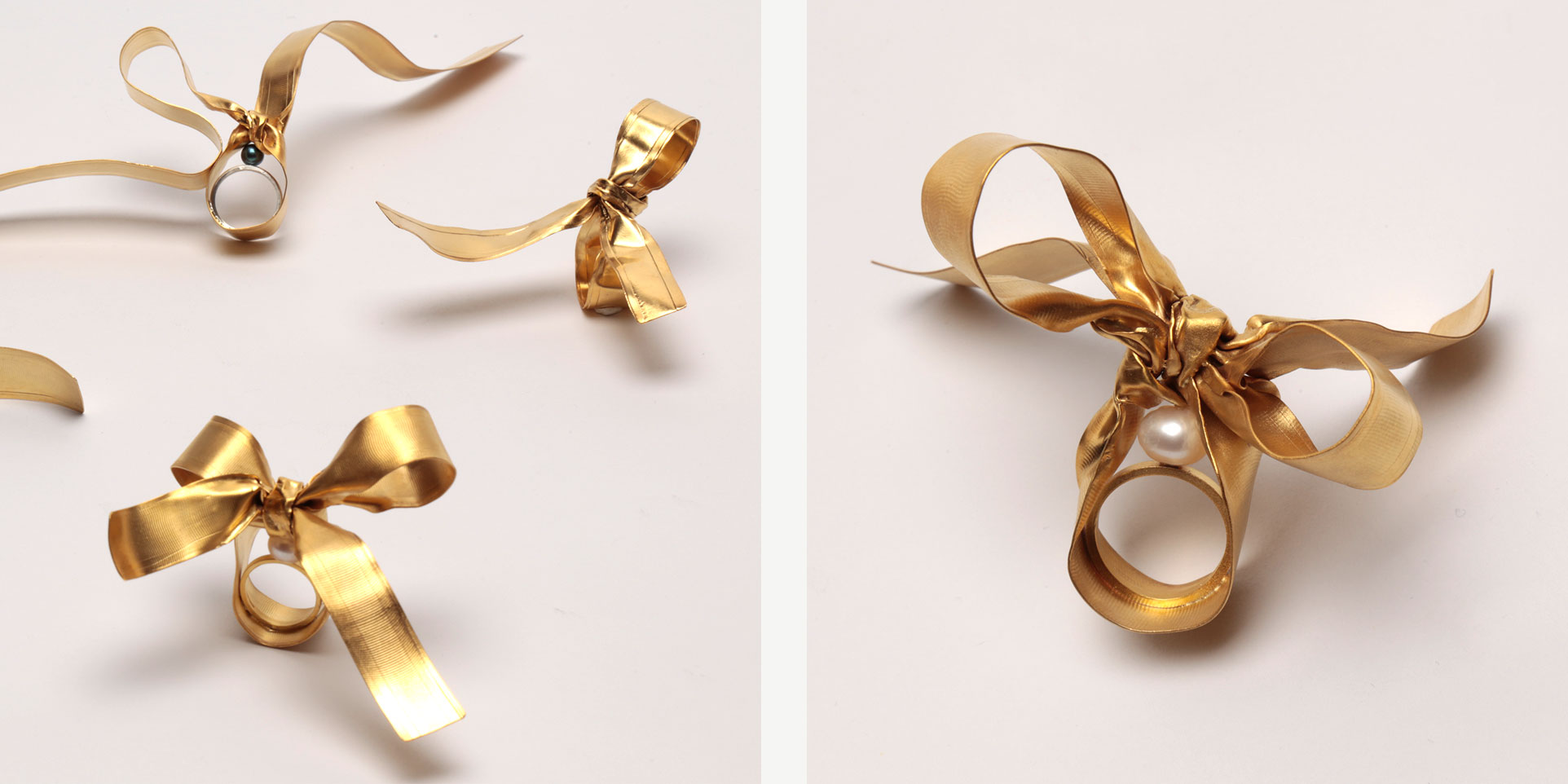
Jieun Kim
Tell us a little bit about yourself.
I am from South Korea where I studied oriental painting before starting the jewellery course here at CSM. Tradition comes quite naturally as an approach to my work as I enjoy applying skills specific to metal in my work. Nevertheless I state that I am a contemporary jewellery designer using tradition with a twist.
What was the inspiration for the 'Crowning Moment' collection?
This collection goes along the lines of the work by renowned artist Jeff Koons, in the sense that I am using visual trickery and challenging what is expected of a material. I transform metal into fluid shapes. Each piece from the collection represents a different stage of the tying and untying of a bow knot – a gesture that I have enjoyed decomposing to reveal the simple beauty in movement, the celebration of a moment.
What do you find inspiring about pearls?
My designs tend to develop into simple forms that have boiled down my idea to its essence. Pearls represent the simplicity and purity of form that I try to reach in each of my projects. The subtlety in colour, the strength in quality and yet pale and fragile appearance of a pearl seem adequate with any kind of material. It is more of a universal than neutral quality that can be associated with it. In my eyes, pearls against fabric bring forward to extremes of smothers, creating an intriguing contrast. This is why I have integrated a pearl into my centre piece.
What have you discovered about working with pearls?
With the round pearl I used specifically for my collection, I learnt ways of setting in a measured gap.
Which designer or artist do you most admire?
Alexander McQueen has been a great inspiration. He has managed to create his own world with all its intricacies at the top of the immense fashion industry. His pieces are expressive and tailored to perfection.
Who could you imagine wearing your jewellery?
I see my jewellery as accessible to a wide audience. I try to make my ideas clear and I keep them simple so that people can relate or interpret them in their own way. The size of my pieces vary but mostly they become relatively large but remain wearable. I see them as little narratives at hand.
What is it that makes a piece of jewellery a design classic?
I think a design classic is an object that represents the culture and society or group within society from a specific epoch.
What’s next for you after CSM?
I would like to get various work experiences within the field of jewellery. -
Balenciaga: Shaping Fashion at the V&A
Balenciaga: Shaping Fashion at the V&A
Extraordinary as it may seem, the V&A’s Balenciaga: Shaping Fashion, recently opened, is the first British exhibition to focus on the work of Cristobal Balenciaga, the 20th century master of couture described by Cecil Beaton as the “Picasso” of fashion.
“Underneath all his experiments with the modern,” Beaton wrote, “Balenciaga has a deep respect for tradition and a pure classic line.” It was Beaton who acquired what is now Britain’s largest collection of Balenciaga couture for the V&A in the 1970s. He was one of many admirers, from protégé Hugo de Givenchy to Coco Chanel, who believed that “Balenciaga alone is a couturier in the truest sense of the word.”

Image 1: Cristóbal Balenciaga at work, Paris, 1968.
Image 2: Evening dress, Cristóbal Balenciaga, Paris, 1962.
The exhibition focuses on Balenciaga ‘s couture techniques, as well as his approach to business and his international clientele, revealing the balance that he struck between tradition and modernity. Two inspired commissions “shed new light on his exquisite craftsmanship,” says V&A curator Cassie Davies-Strodder, “and challenge some of the myths that have built up around the elusive designer.”
One is a series of life-size x-ray images by artist Nick Veasey that reveal for the first time the underpinnings of some of Balenciaga’s most famous style innovations.
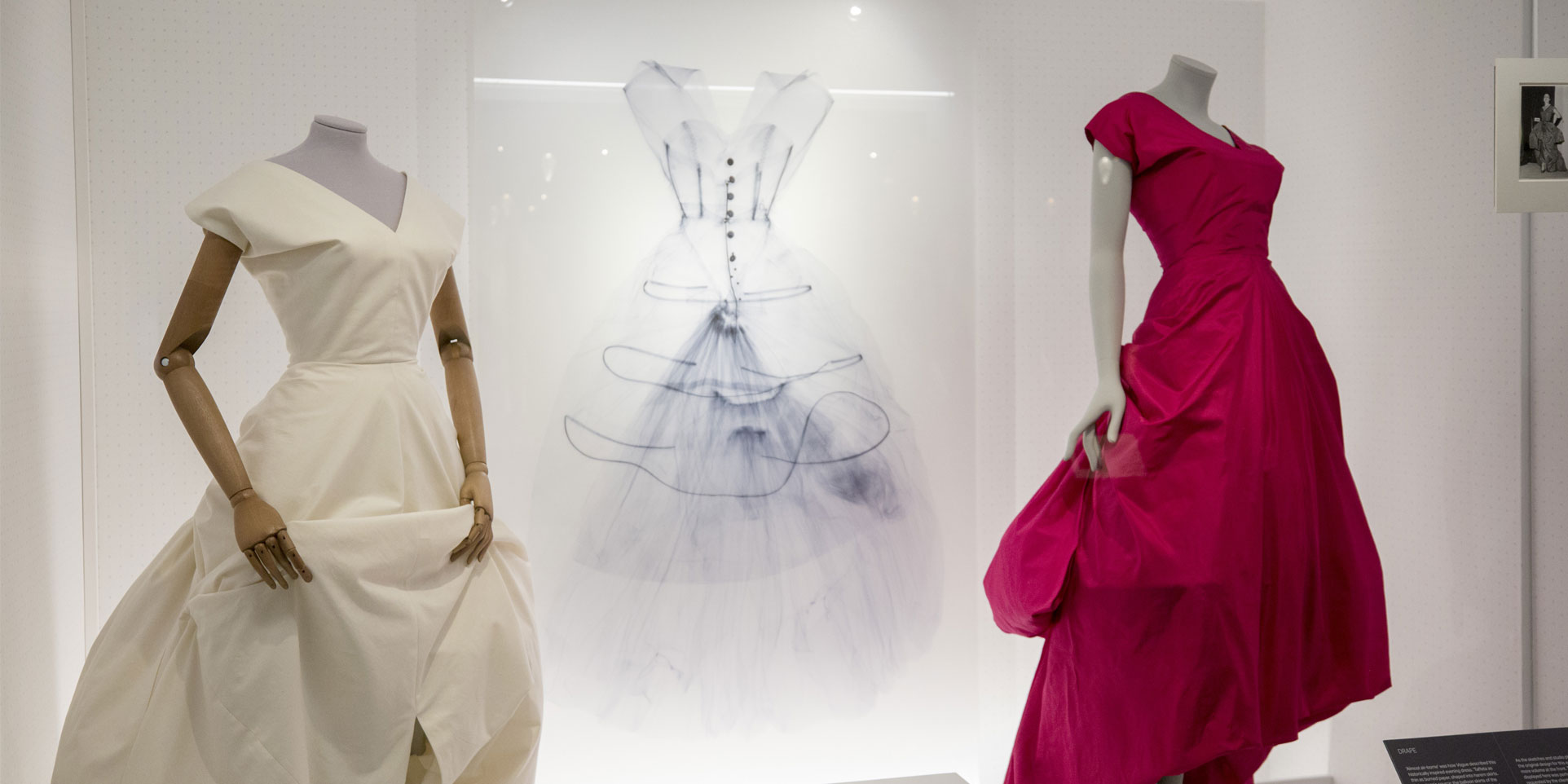
Image: Balenciaga Shaping Fashion Exhibition View
Focusing on the latter part of his career, the collection presents some of his most famous shapes, many of which caused consternation at the time but have gone on to form wardrobe staples for women for generations – “the tunic, sack, ‘baby-doll’ and shift dress all remain style staples today,” says Davies-Strodder. Sketches, animated patterns, fabric samples, photographs and catwalk images accompany the garments, giving a glimpse into the couturier’s “uncompromising creativity.”

Image 1: Lisa Fonssagrives-Penn wearing coat by Cristóbal Balenciaga, Paris, 1950.
Image 2: Bolero jacket, EISA, Spain, 1947.
Alongside Veasey’s x-rays, they reveal Balenciaga to be deeply knowledgeable of his craft, inspired by sources as diverse as the structures of 18th century dress, the folds of the Roman toga and drape of the Japanese kimono. Balenciaga was able to innovate whilst at the same time using traditional boning structures, cutting techniques, metal weights and other sleight of hand to amplify the extraordinary silhouettes that had previously appeared to be created by genius alone.

Image: Balenciaga Shaping Fashion Exhibition View
The exhibition marks the centenary of the opening of Balenciaga’s first fashion house in San Sebastian, and the 80th year since he founded his eponymous label in Paris. It opens with a series of pieces inspired by his native Spain, framing his explorations of colour, black lace, silhouette and drama as characteristically Mediterranean qualities.
Alongside his craftsmanship, it looks at the growth of the business, in particular how Balenciaga’s understanding of his client’s lives contributed to his success, inspiring key shapes and ideas. His love of the sleeve, particularly the bracelet shape and the kimono drape that became his signatures, was informed by the way these shapes helped to frame of his client’s jewellery. The standaway collar, another signature, was described as the best shape to emphasise the beauty of – of course – a string of pearls.
The exhibition runs until 18th February 2018, supported by a series of workshops and lunchtime lectures. Further details can be found on the V&A's website.